A trip to Maison Picassiette
As the last days of a hot Summer drew to an end late September, clear blue skies and an overwhelming curiosity to see the mosaic marvel that Raymond Isidore created over nearly 30 years took us to a day trip away from Paris to Chartres to see the Maison Picassiette. Just a simple hour (allow 30 mins for delays of course) train ride away from Paris city center will take you to the wonderful town of Chartres.

We arrived there around lunch time, so stopped there to eat in front of the magnificent Notre Dame Cathedral at the Cafe Bleu, a hip well-recommended restaurant in the town. We enjoyed a really delicious, typical hearty French lunch: a Croque Monsieur for myself and a Croque Madame for Matt.
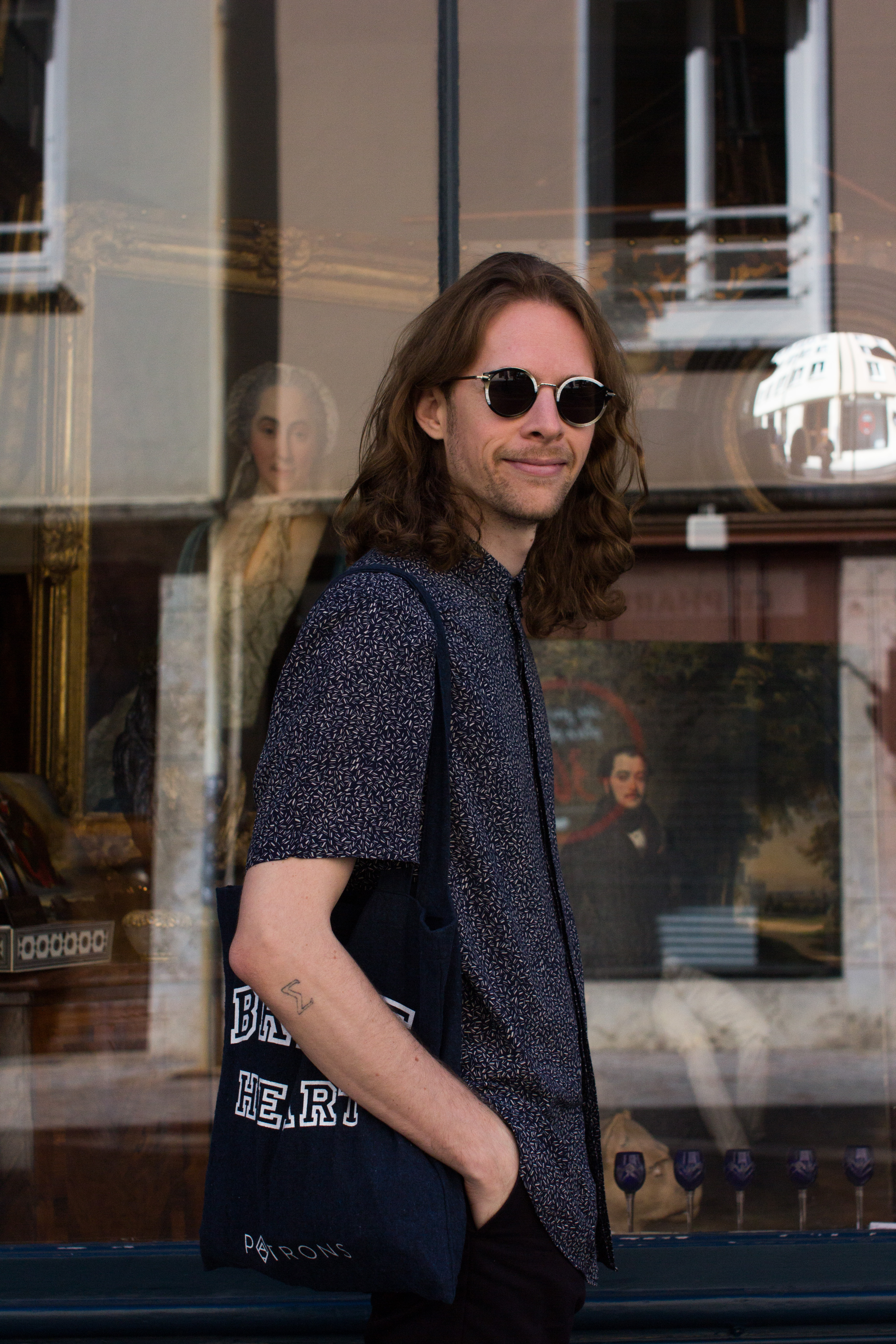
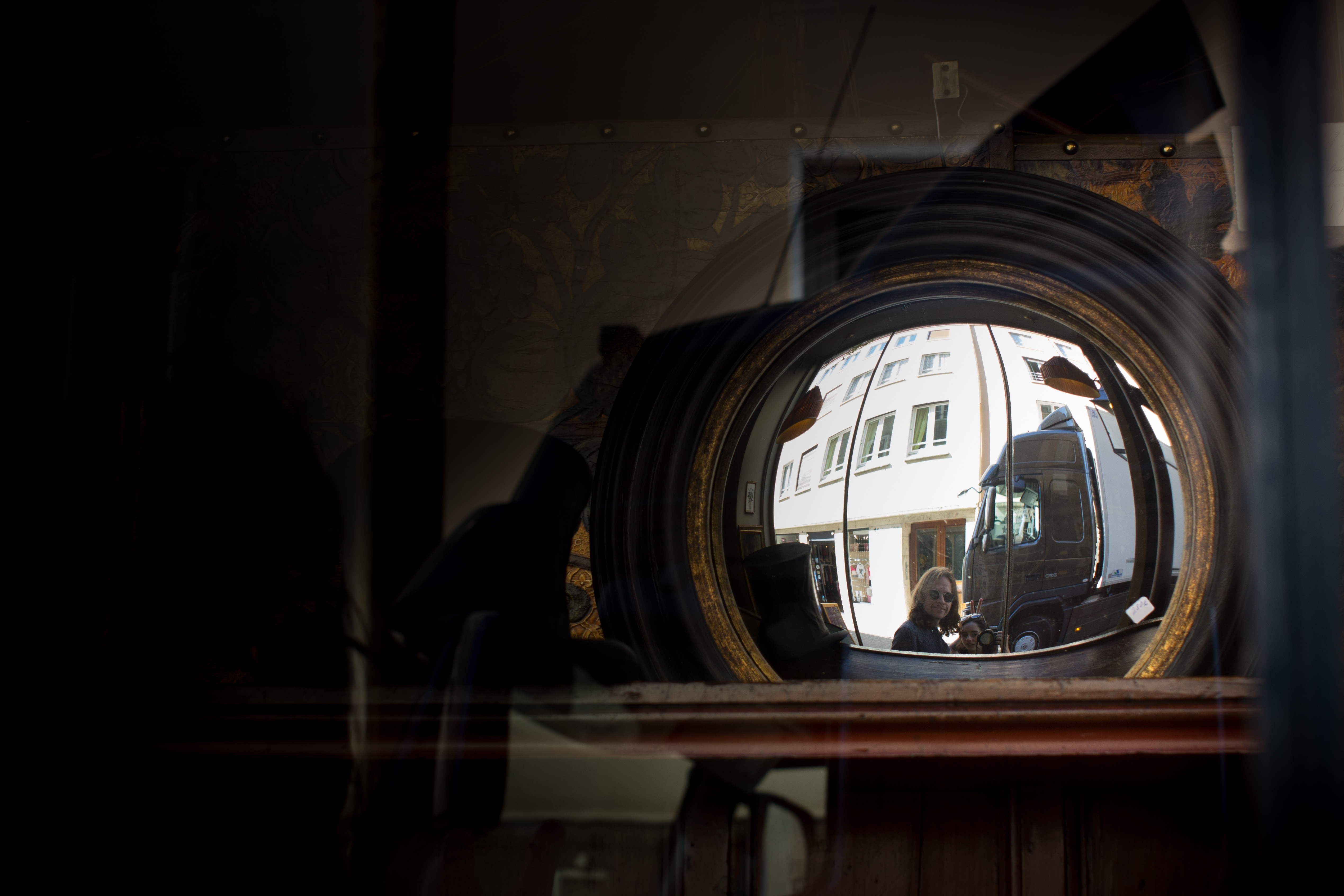

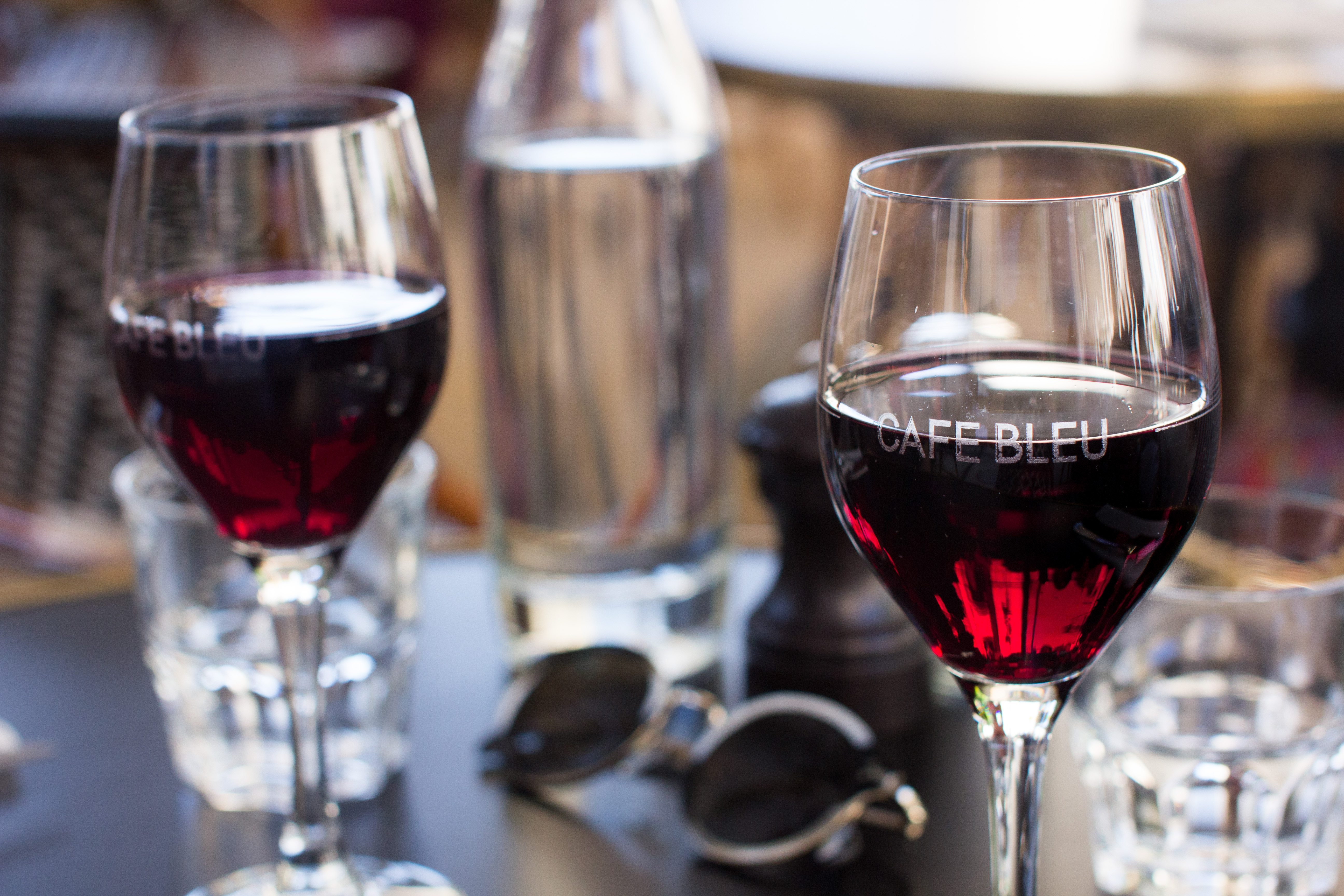


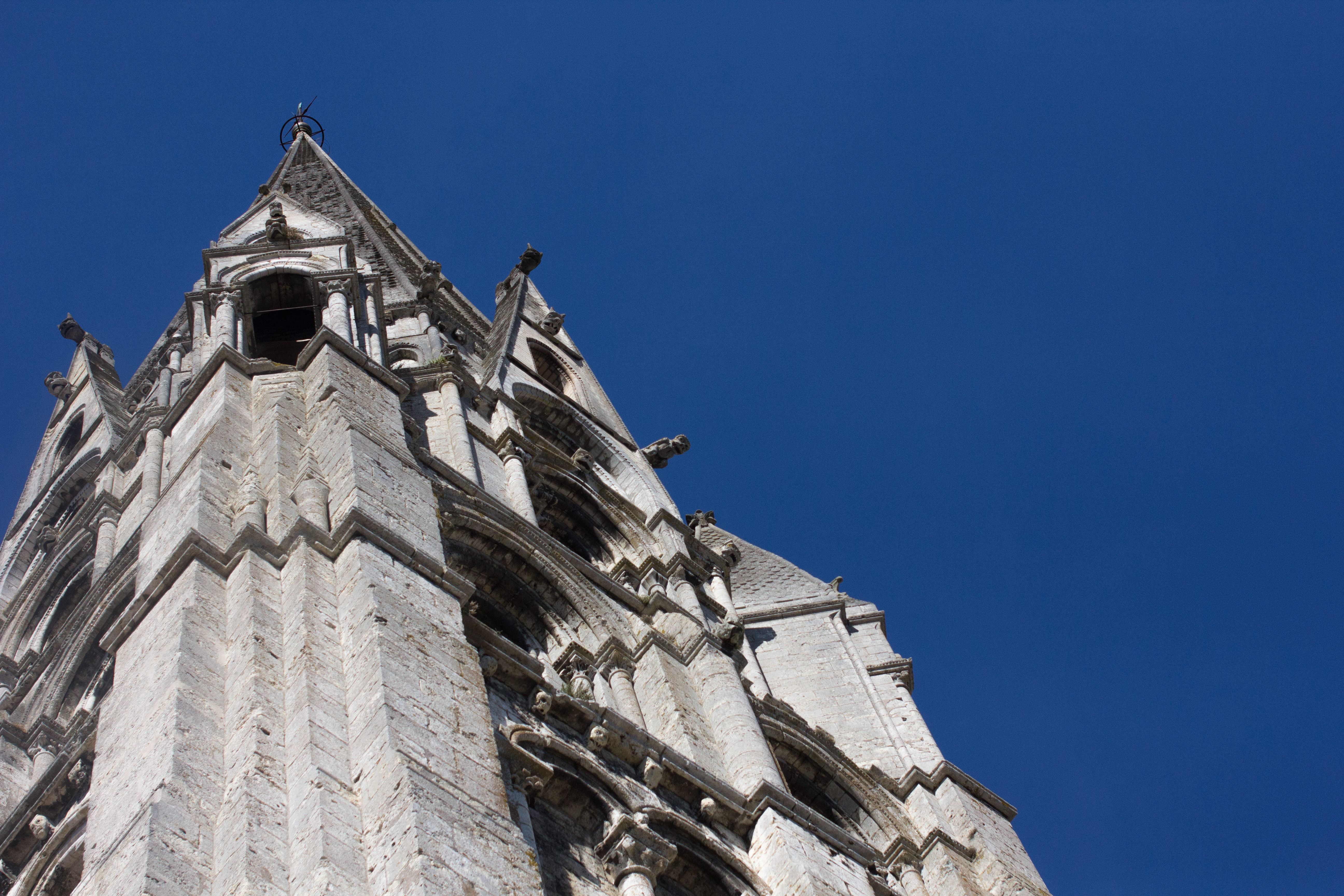


We then took the 30 minute or so walk through the town, residential areas and through the vast St Chéron Cemetery that is situated close to Maison Picassiette. It’s fairly easy to get to if you have a map and you will notice that there are mosaic tiles along the way that will show you you’re on the right path.

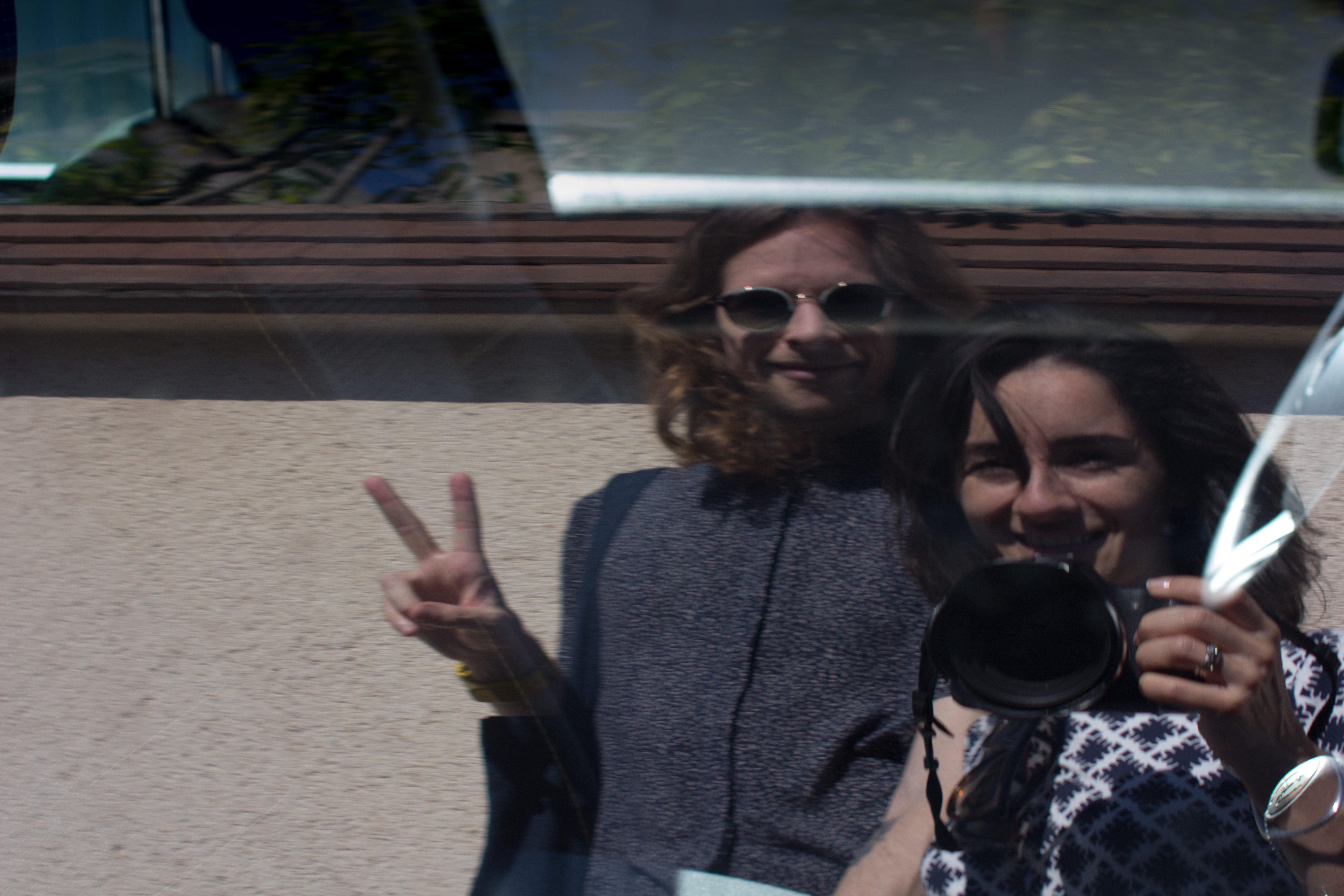

On that beautifully hot sunny day, the glimmer of the mosaic house at the end of the narrow footpath that led us there was a spectacular sight to see. I will just run you through a little of the history of the property, the layout of the different rooms and the man who built it with his own two hands.

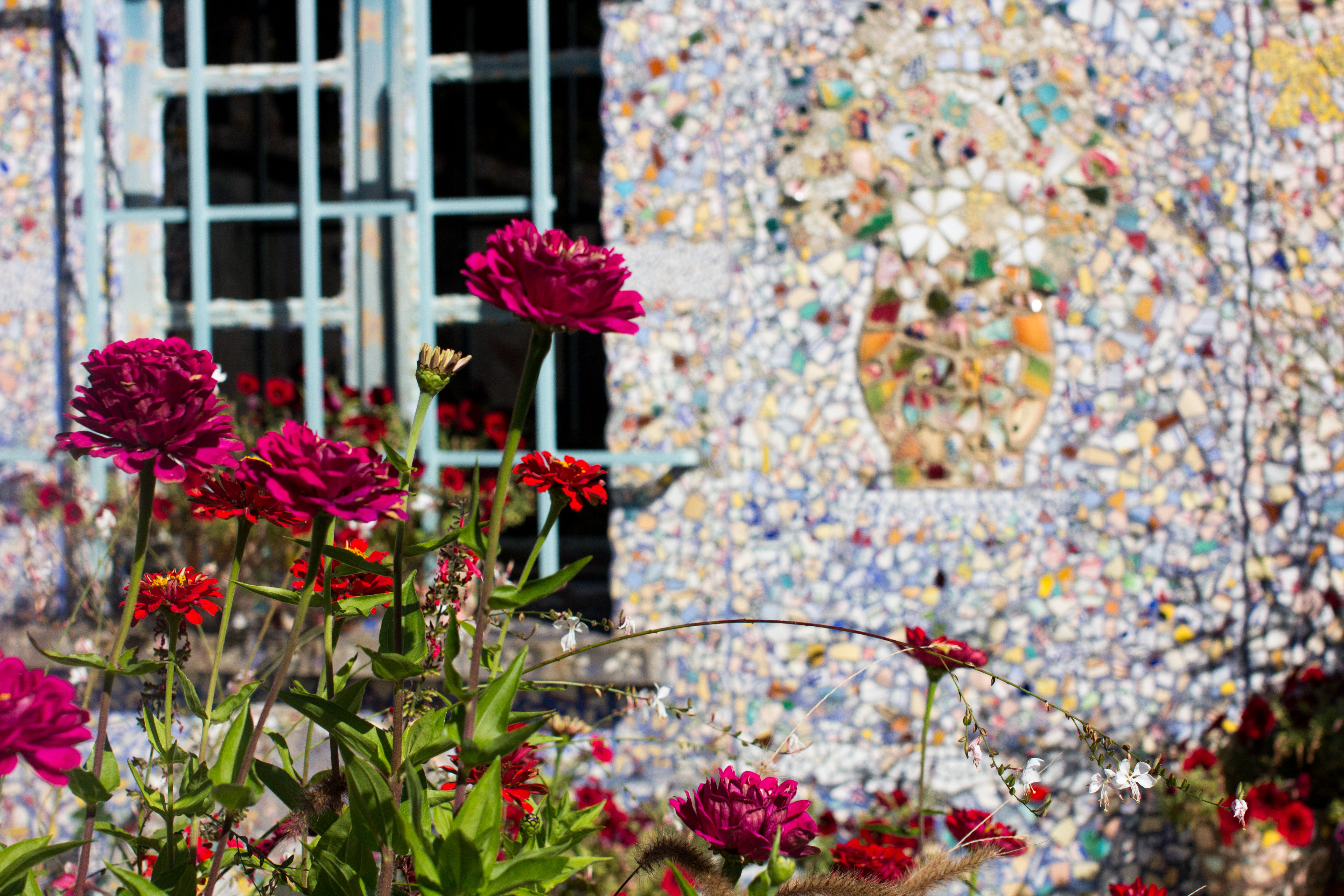


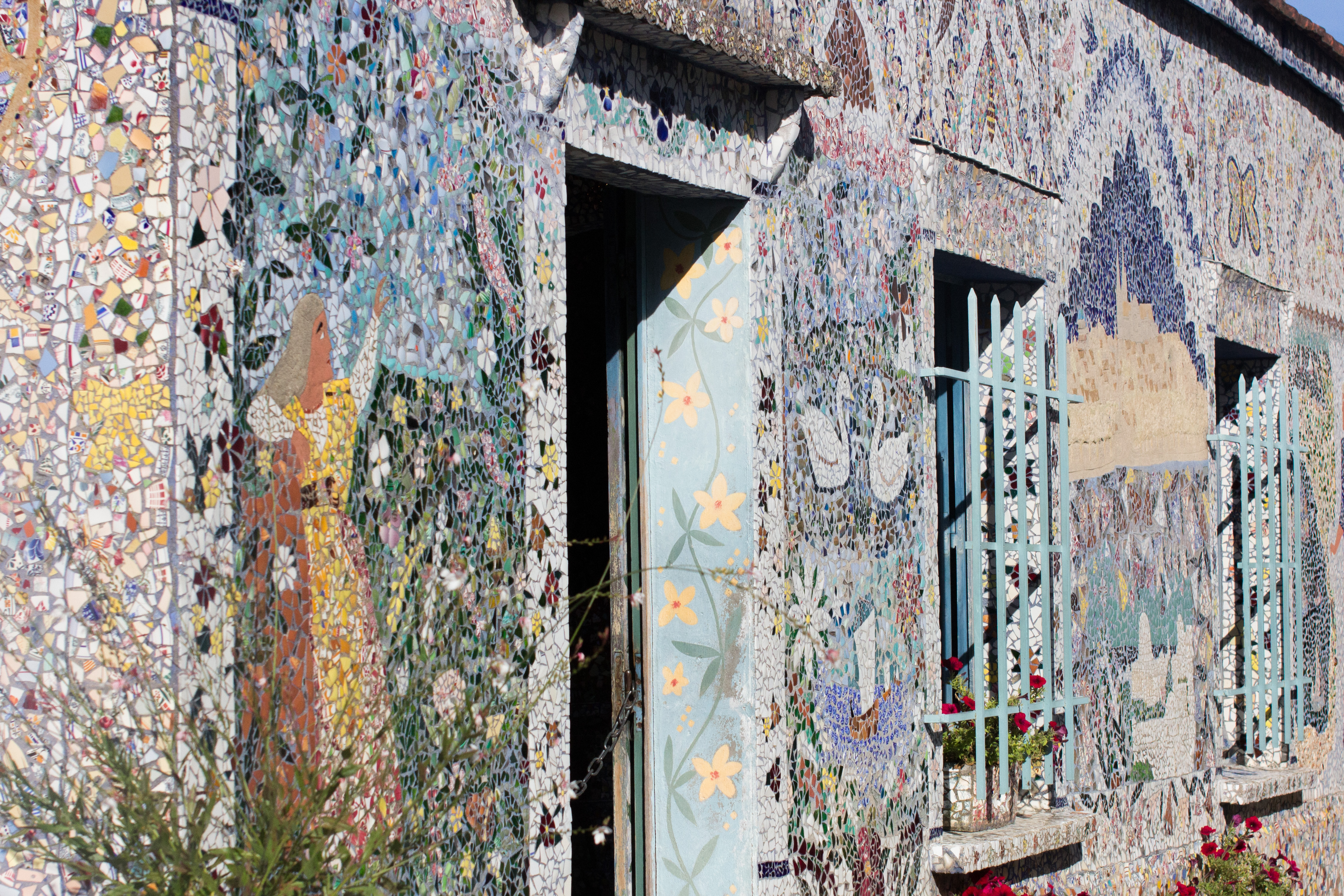

Raymond married his wife Adrienne (a widow with three children) in the early 1920’s and by 1930 had started to build this incredible house and garden.
Raymond found the materials to build his mosaic he needed from other rubbish dumps. The townspeople of Chartres nicknames him “Picassiette” which would seem to be a word play on pique-assiette (which literally translates as “plate thief”, I believe), perhaps also a nod at Picasso as well? Picasso himself also visited this marvellous creation in the late 1950’s. The property is said to be constructed from a total of 15 tonnes of collected crockery.
The magnificent house that represents Art Brut at its best is modest in size, long in length, with all windows and doors south facing. The front door opens up into a small kitchen, which then leads to the small morning room which then leads to the bedroom. Nearly ever surface in the main house is covered with decorative mosaics and painted murals of surrounding countryside scenes.
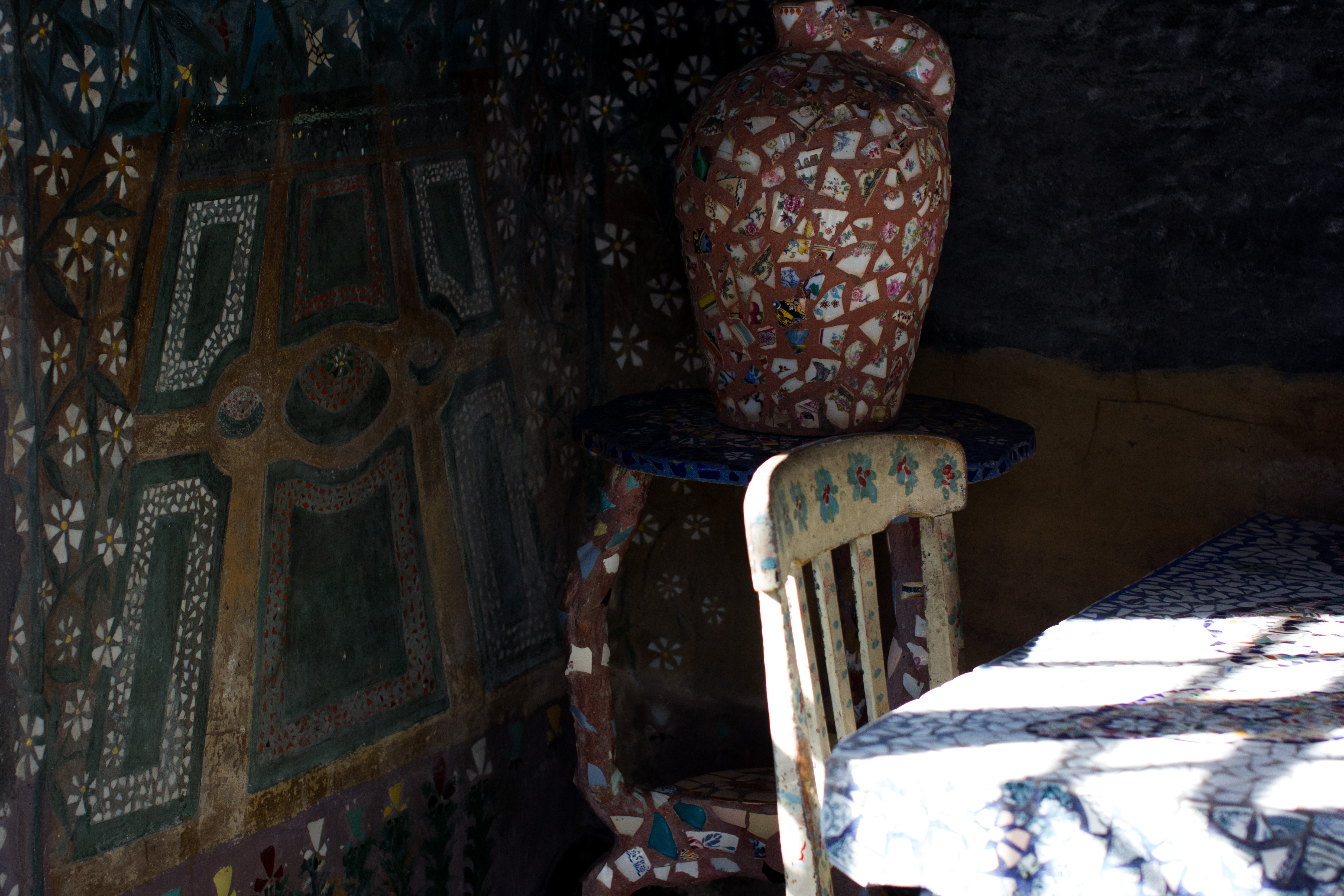

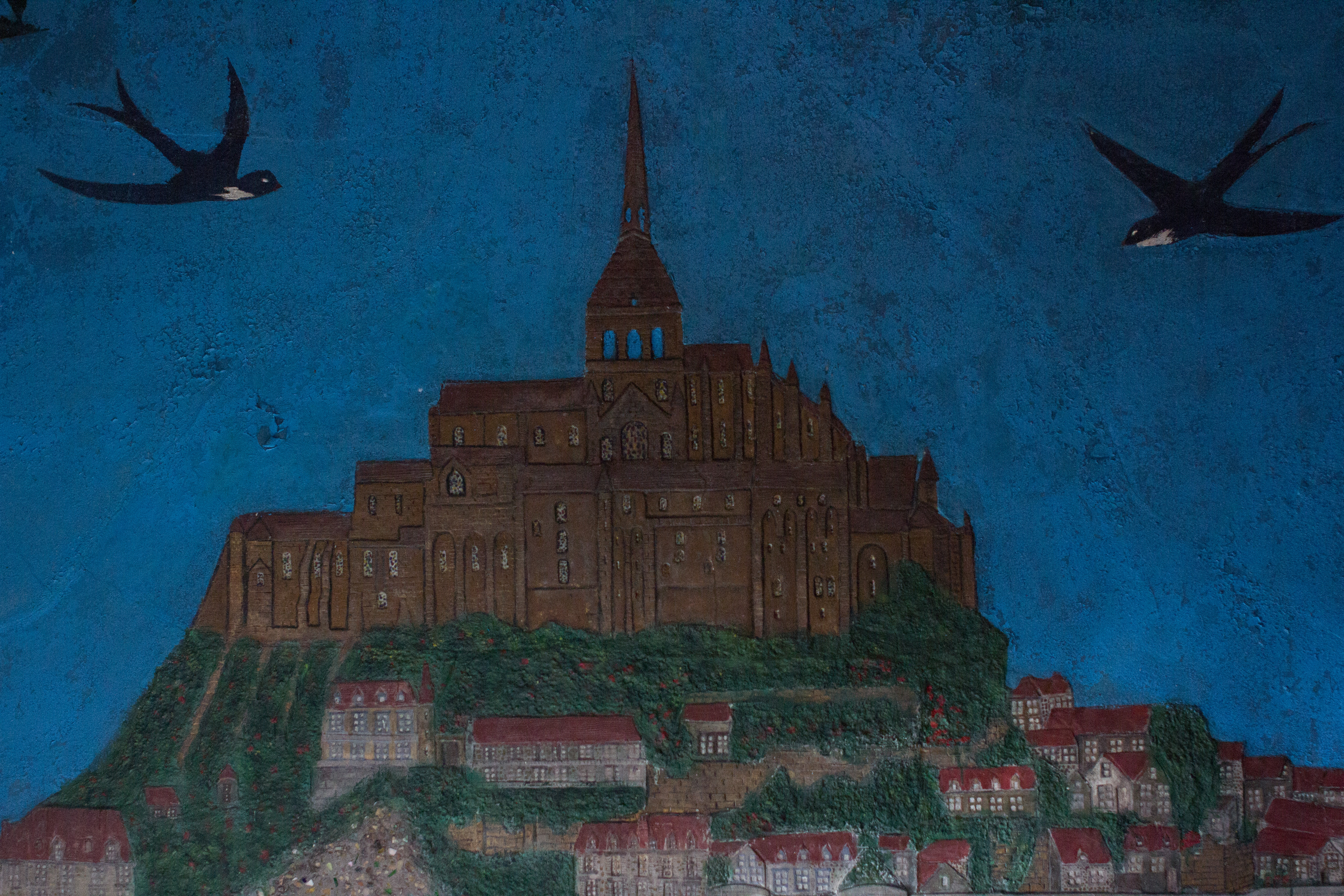
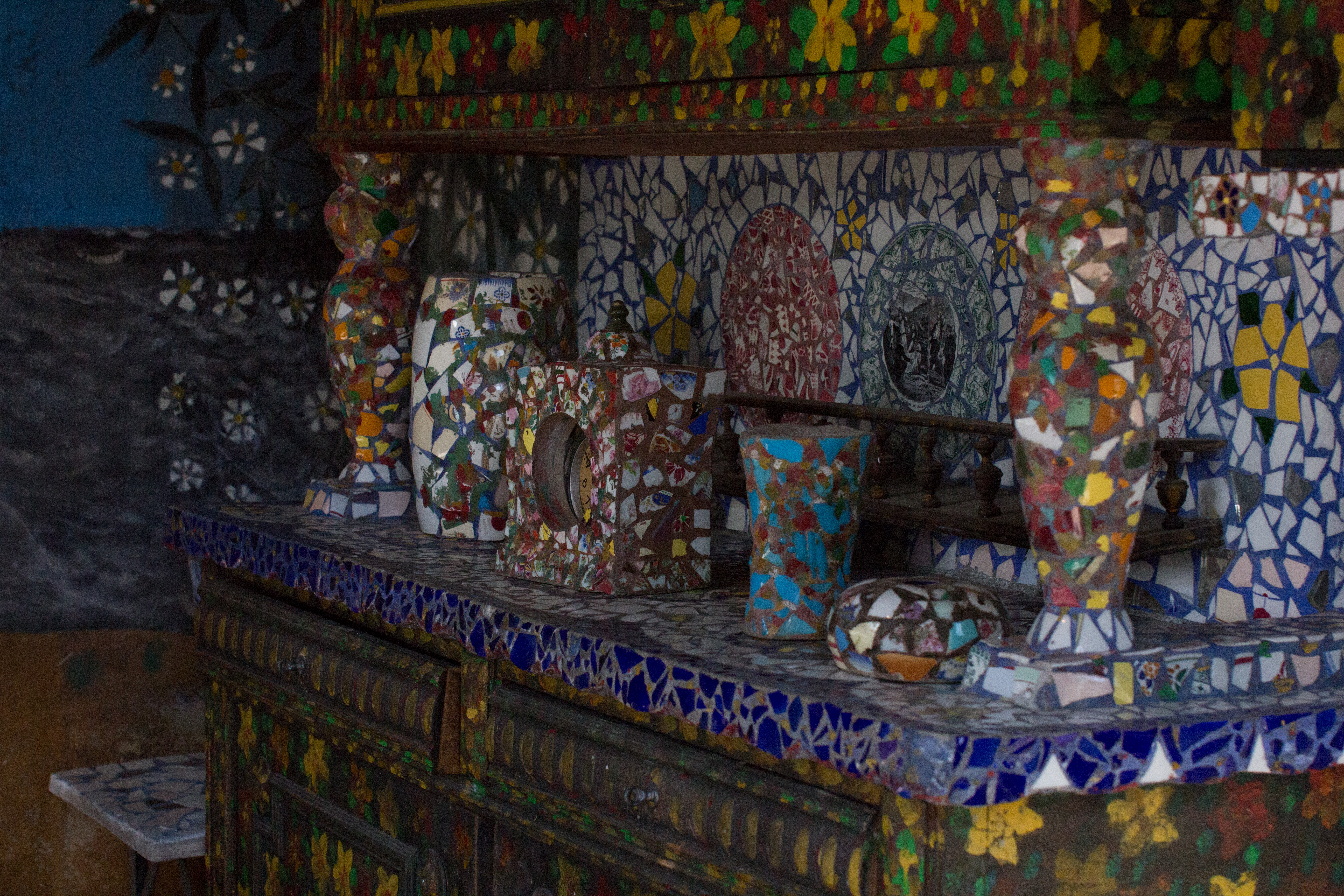
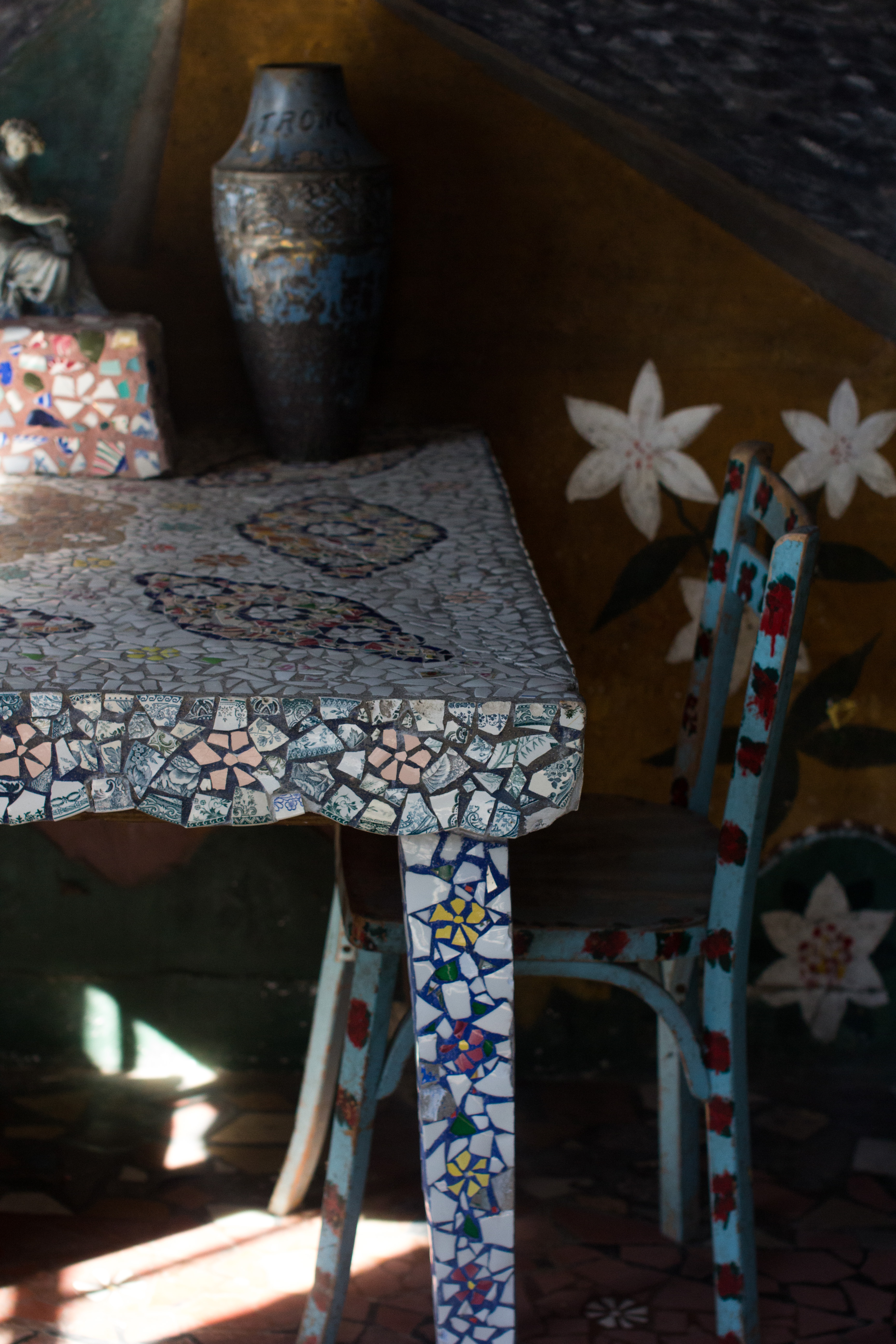
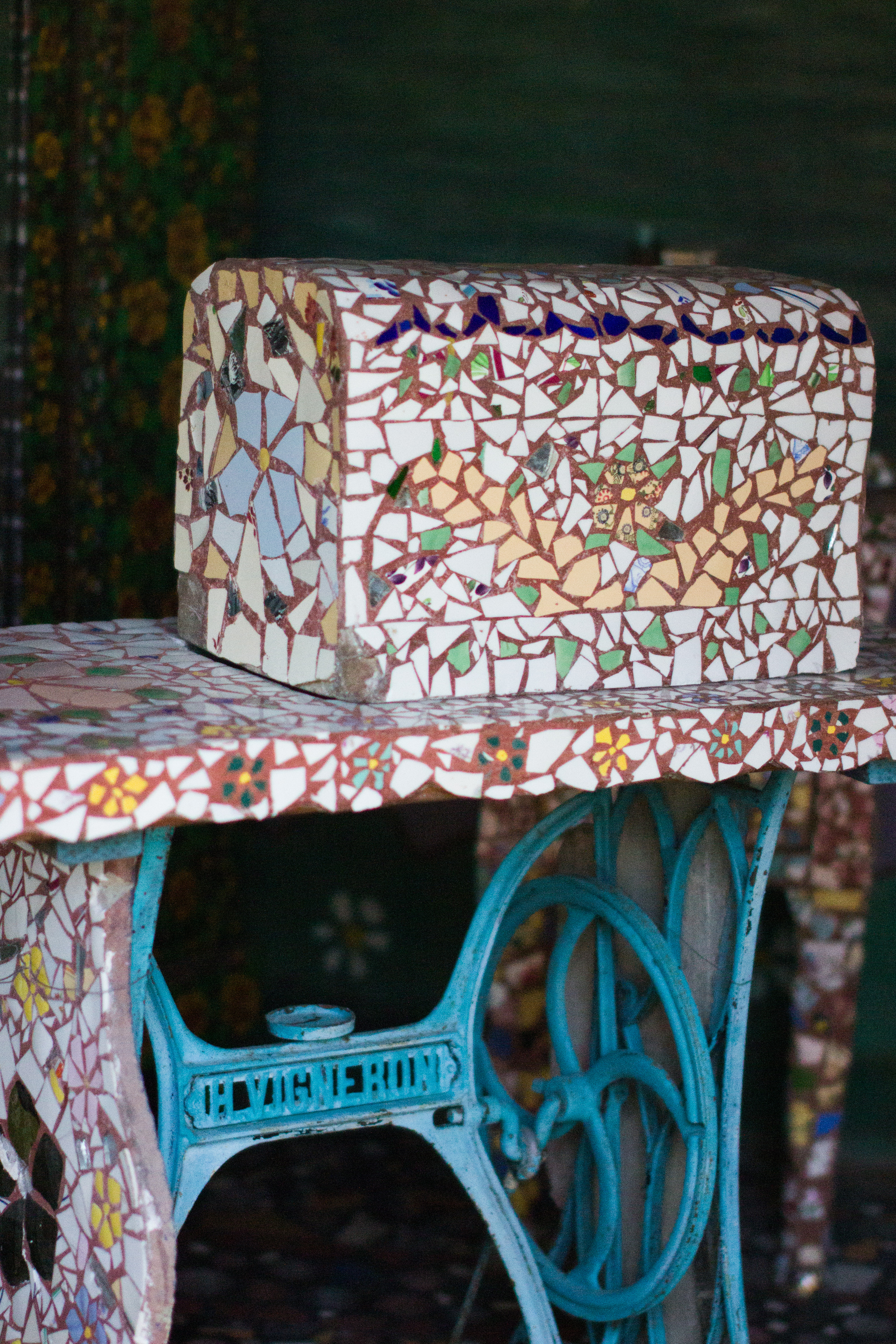

The furniture is all covered in mosaic, the chairs, table, cabinets even the stove top — which I read still functioned fully (believe it or not, Matt). The floors, the ceilings all intricately worked, in the bedroom too the wardrobe, bed and sewing machine are all covered, not a detail gone unmissed. You can see for yourself, it’s quite astounding and even to imagine the logistics of such workings while living in such a small dwelling.
I also read that this work throughout the house even continued during the Second World War; the outside was created after the war.
He started to build the even more intricate workings on the Chapel at the back of the house in the early 50’s. The religious mosaics in this room are predominately blue and really show Raymond’s developed and creative mosaic skills.

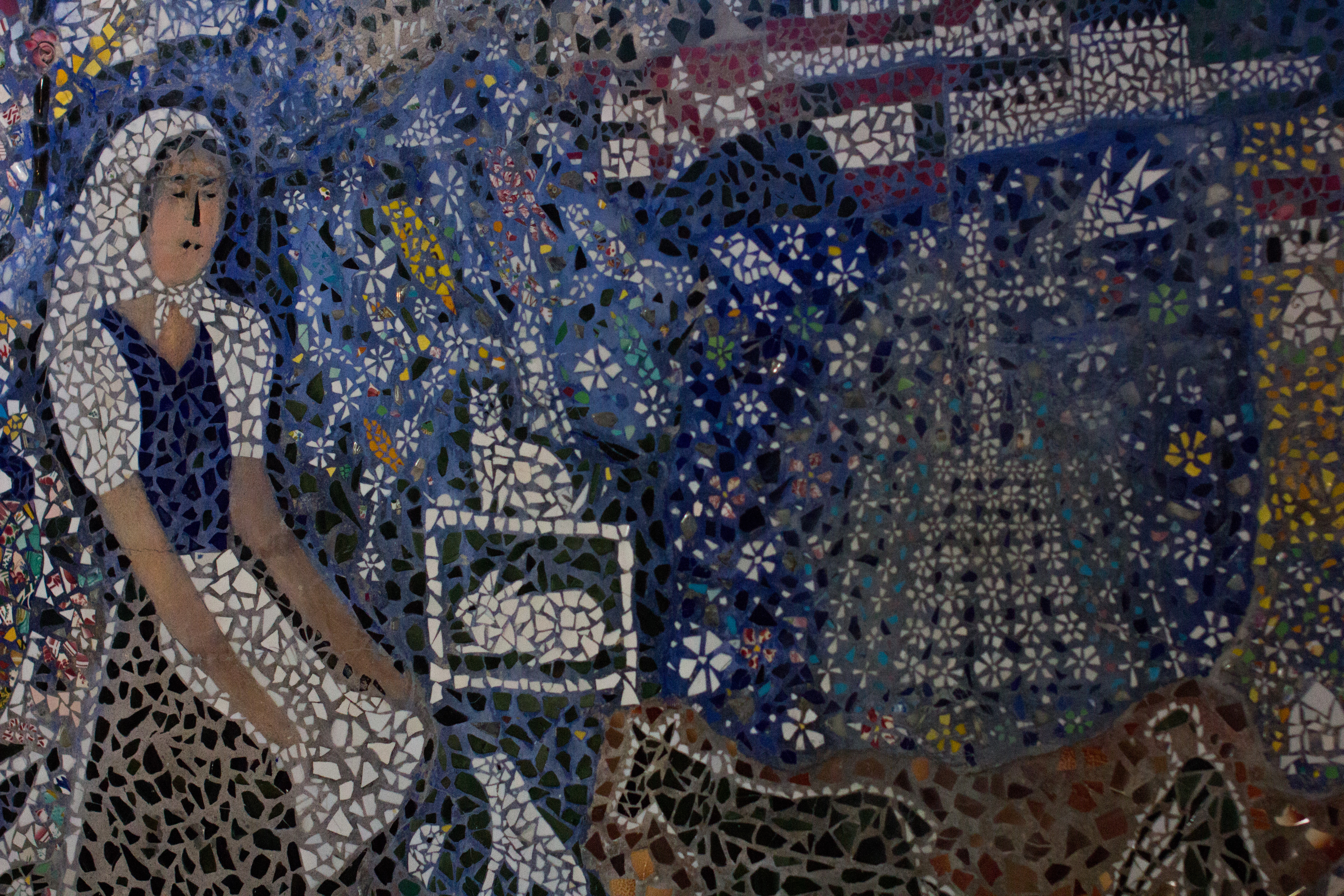
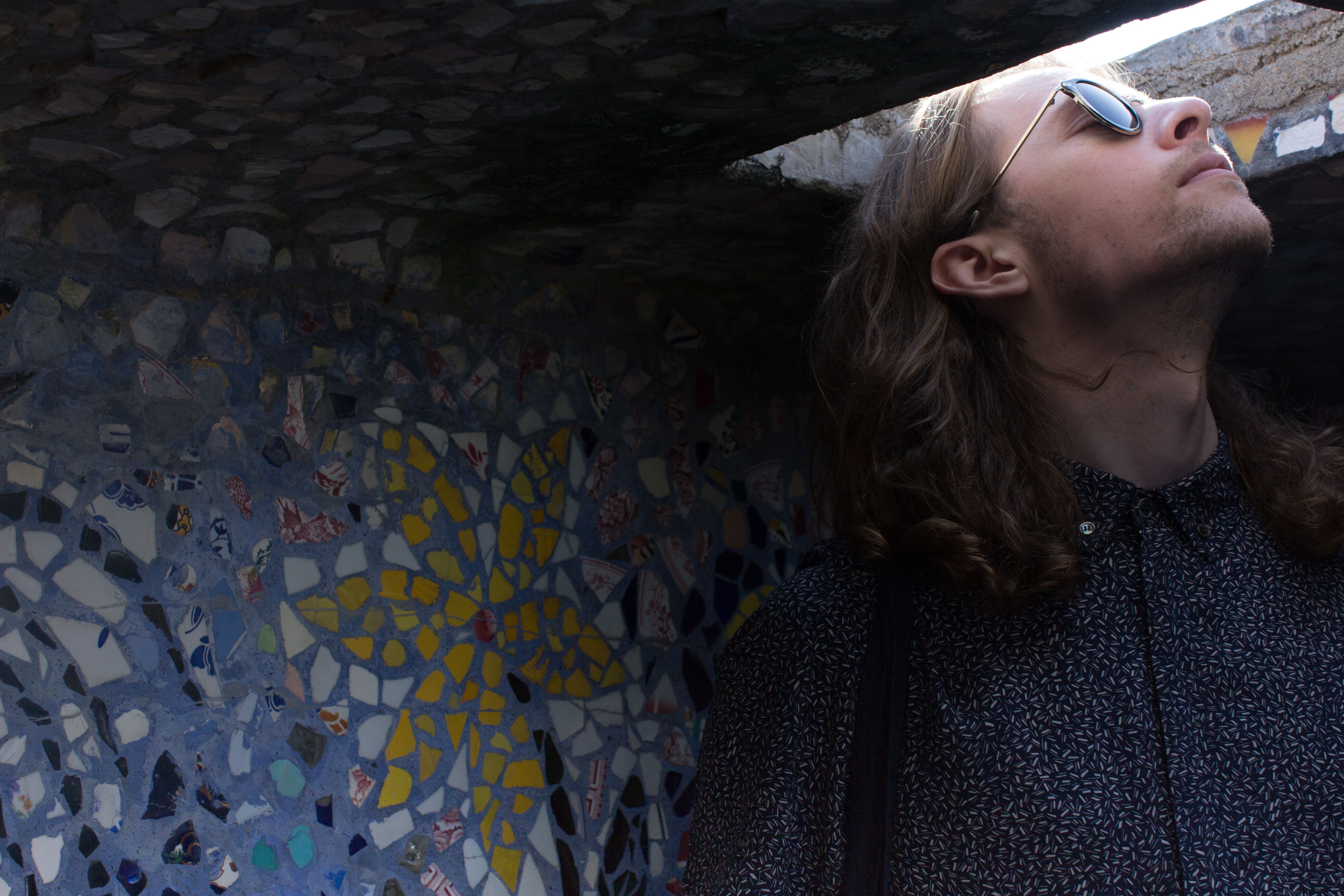

Behind the Chapel lies the second courtyard which is truly quite something to behold. What I found most impressive in this courtyard was the mosaic view of Chartres Cathedral on top of the mosaic Chartres town below (if you squint hard enough it looks like a photograph or a painting of the town). Below that sits a magnificent tomb and sculpture of the Cathedral. In front of this magnificent townscape is a magnificent mosaic embellished throne.

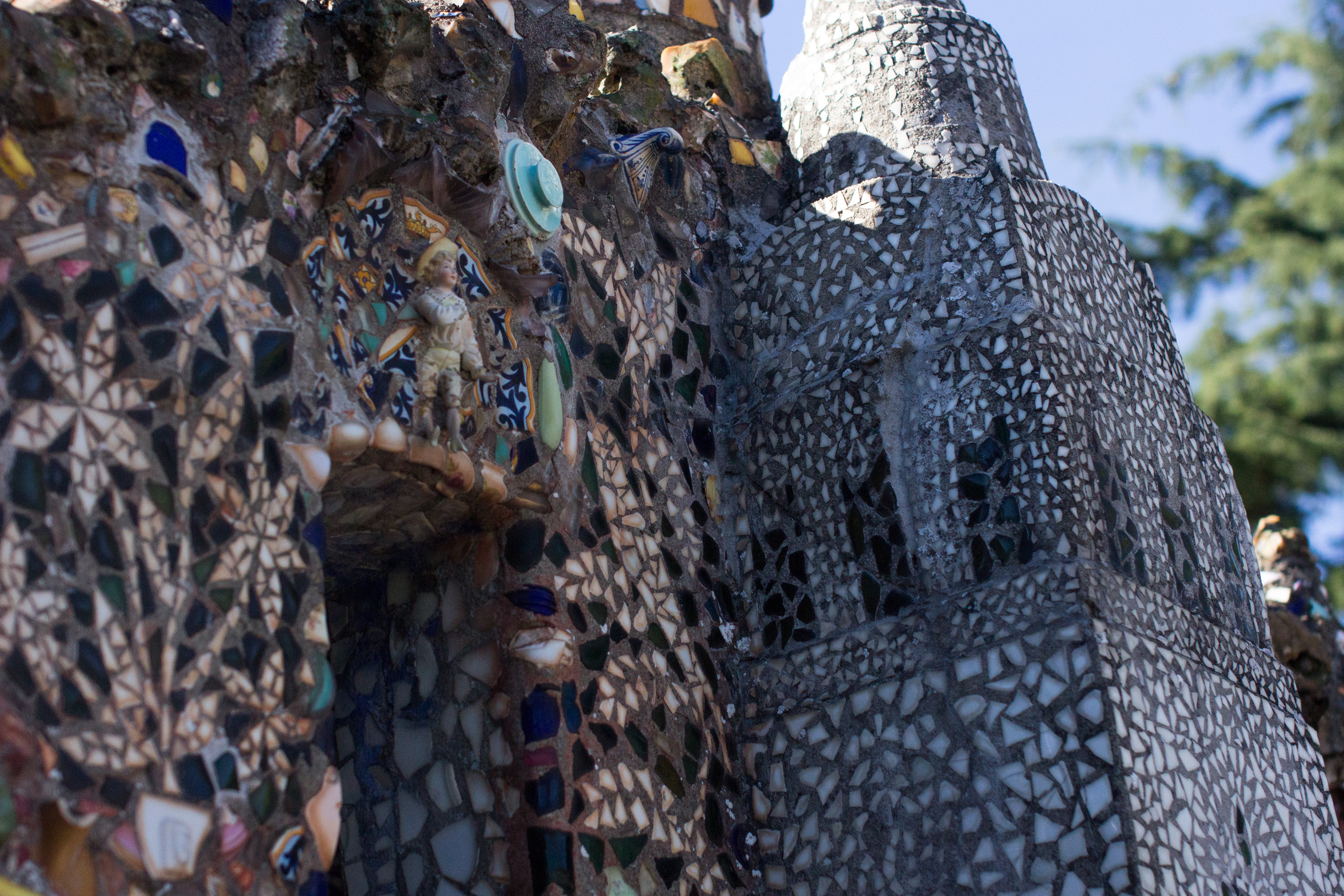
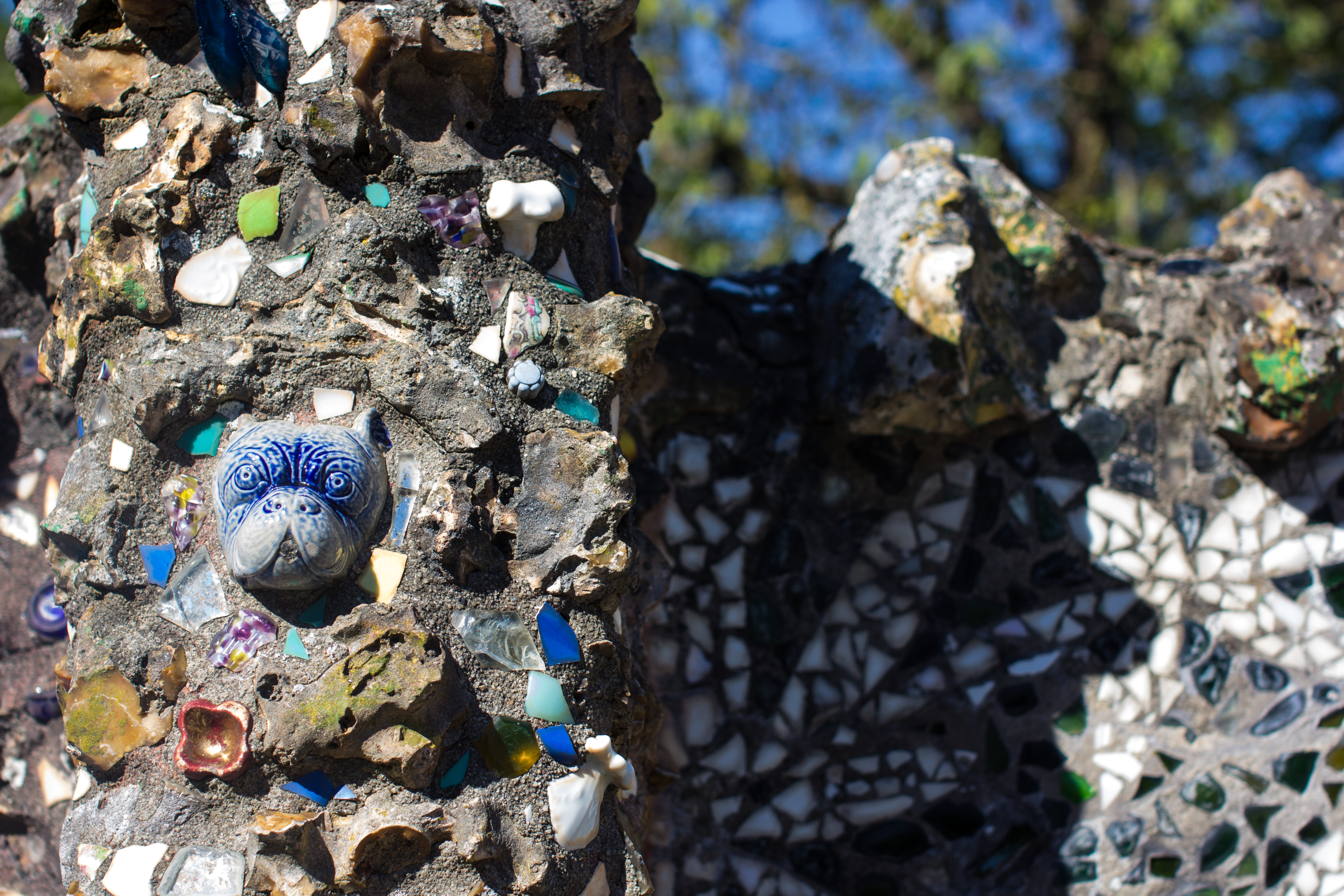
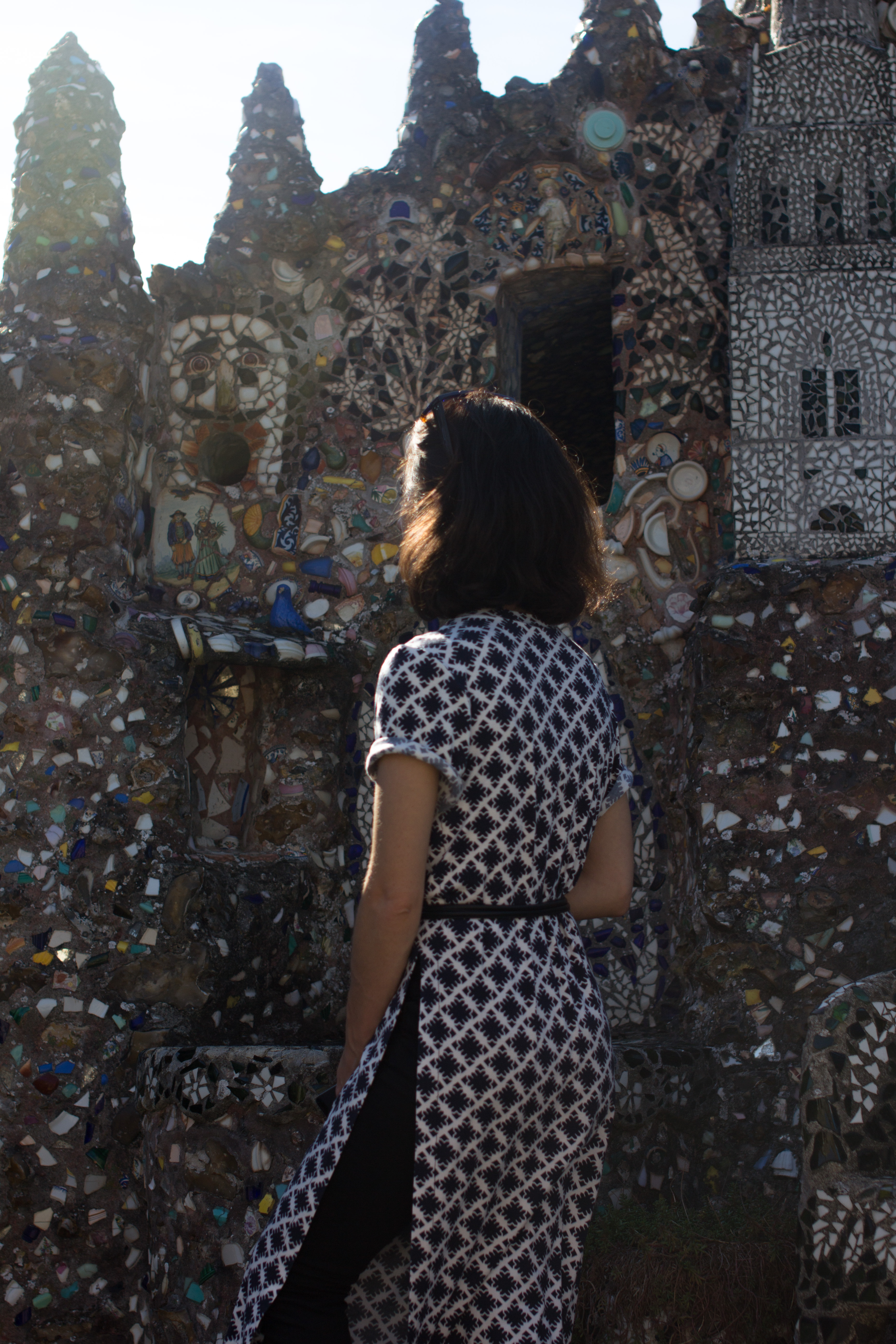


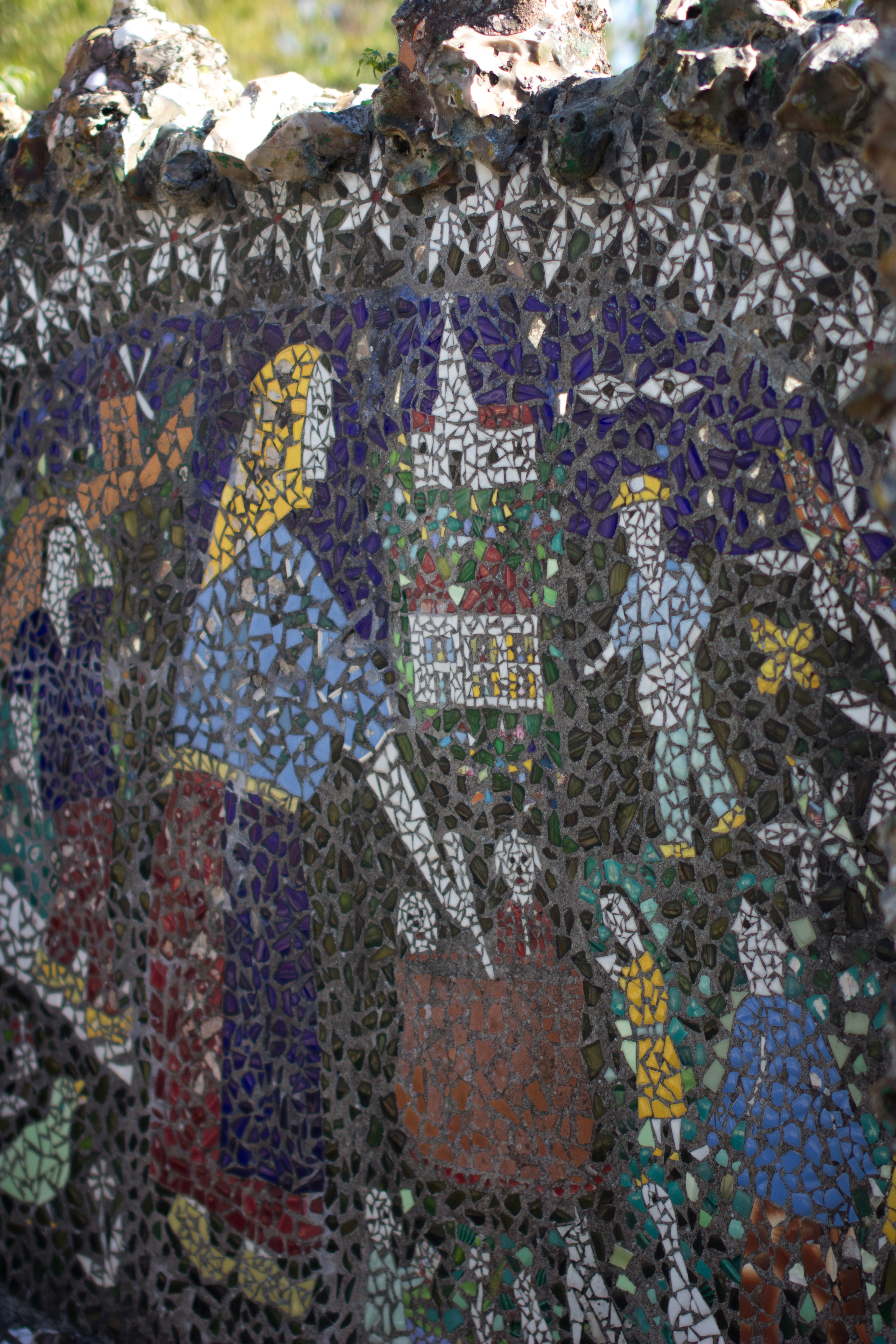
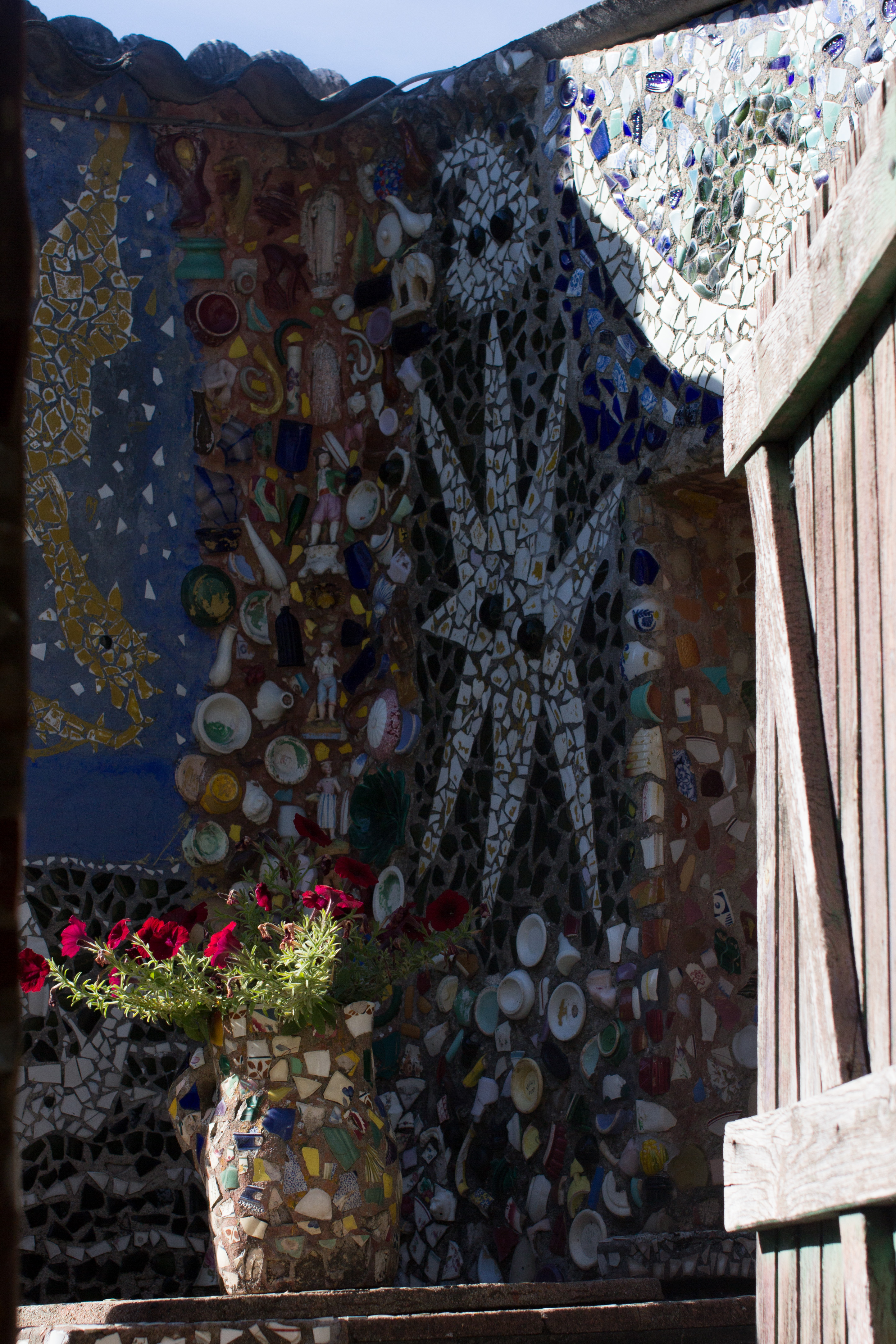
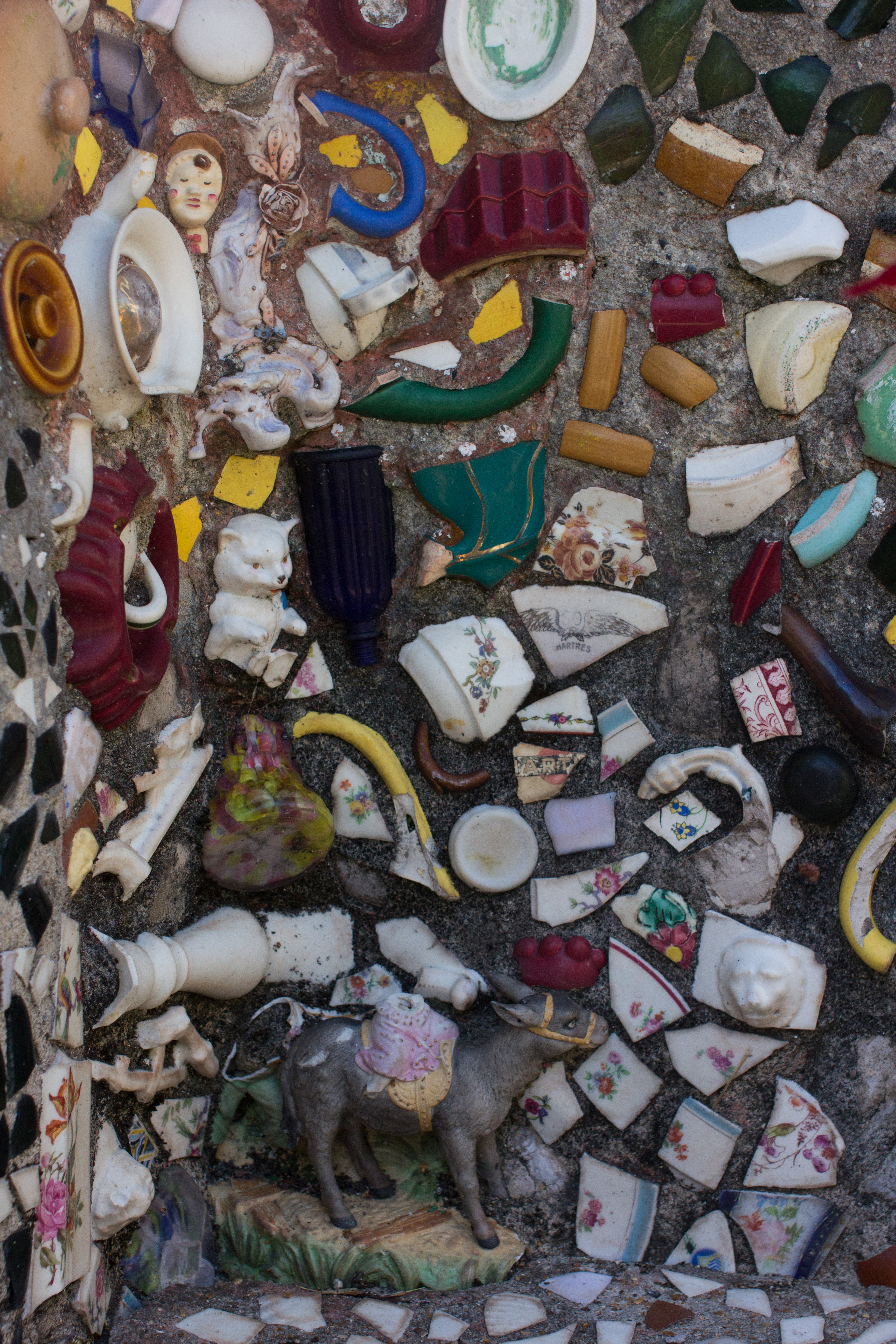



At the end of the property lies the garden with all its flowers, plants, statues and (unfortunately) fading (or faded) murals. There’s another spectacular mosaic scene of Jerusalem and another spectacular throne. The sight of a mosaic Eiffel Tower was funny, and the creative usage of pieces that formed the human features of some of the sculptures were entertaining.
The house glistened in the sunlight that day around every corner we turned and we discovered the playful magic and passion that went into creating this masterpiece of one man’s dream, and that’s such a beautiful thing to behold. You should most certainly put it on your list of places to visit in France (it became an historical monument in 1983).
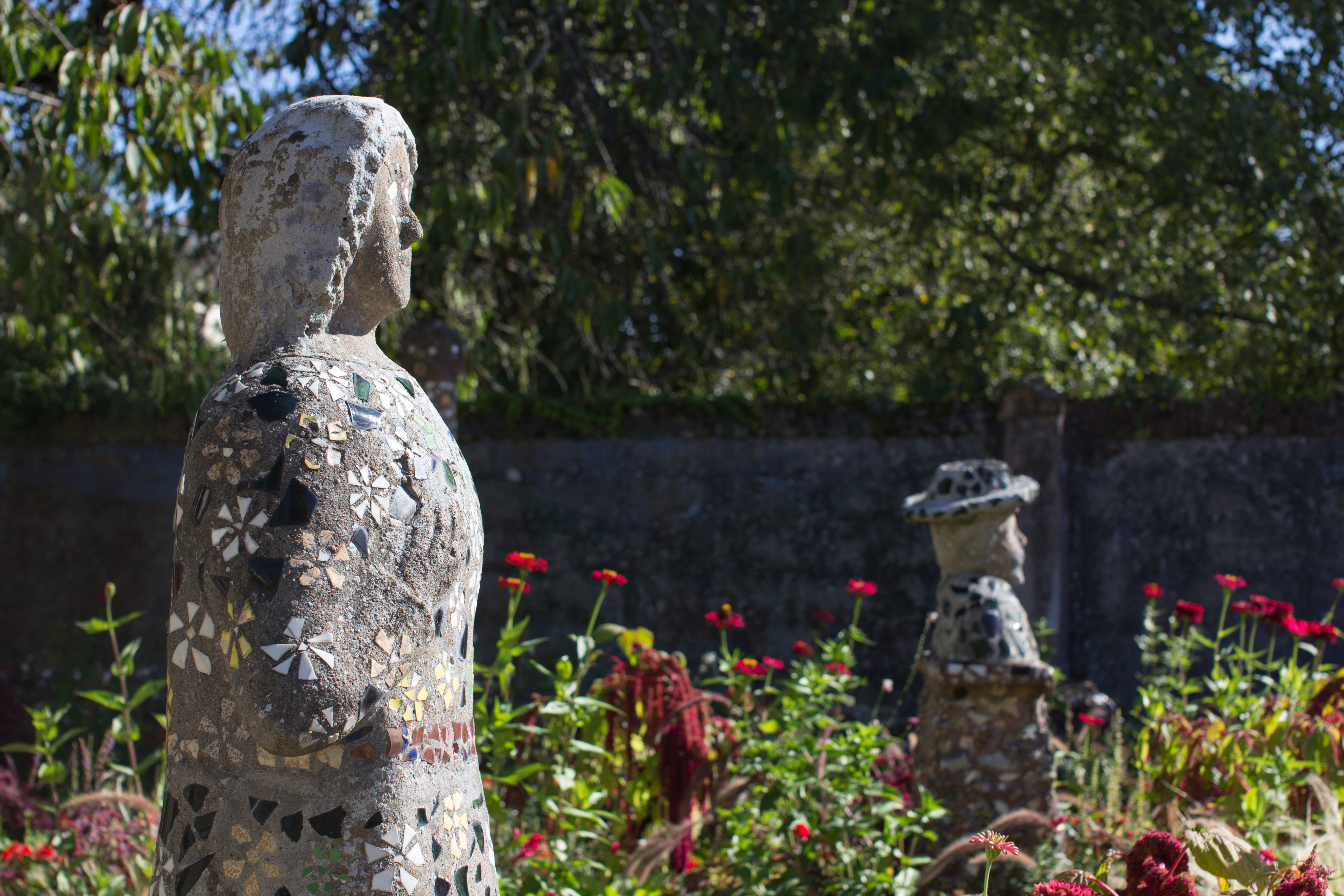
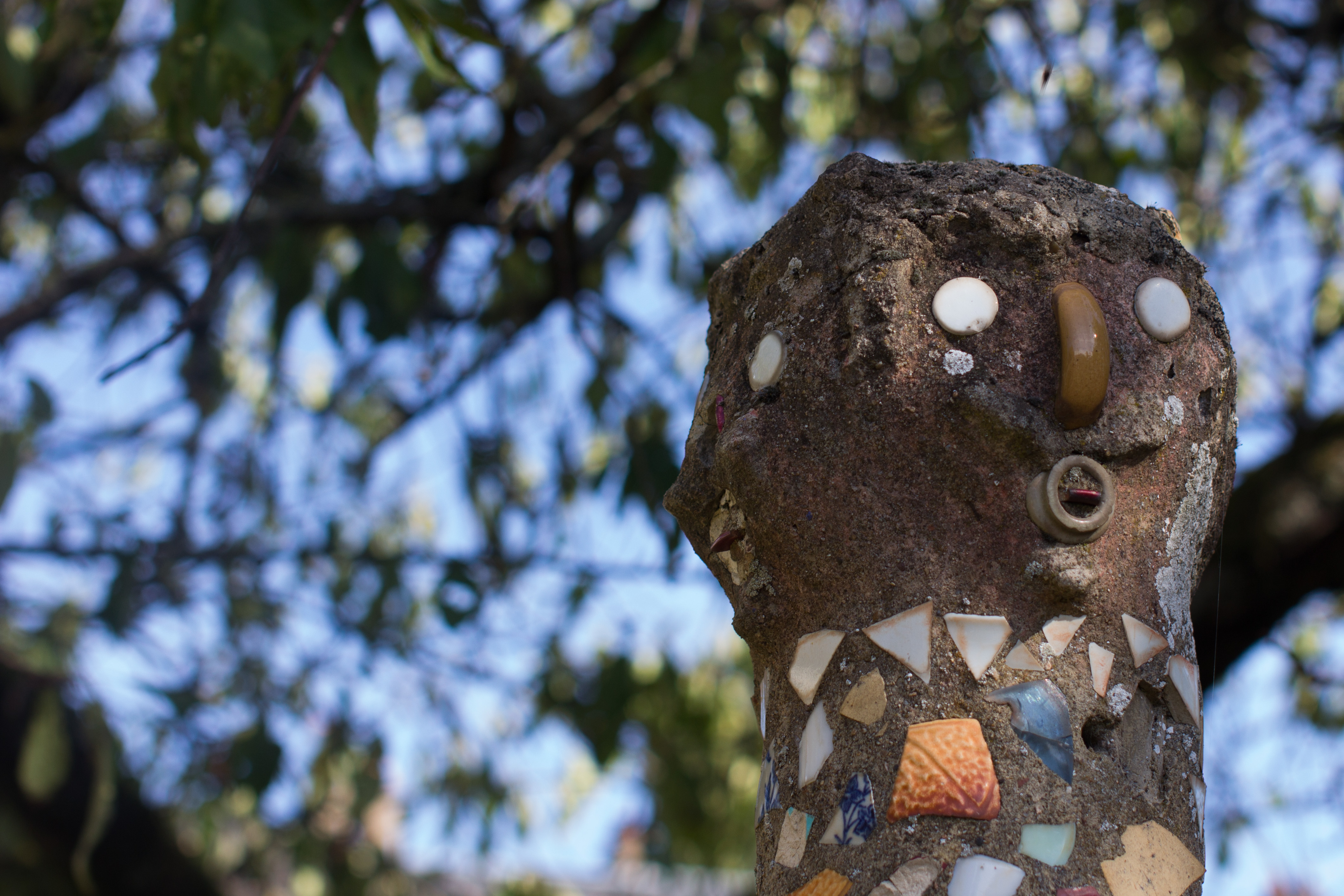




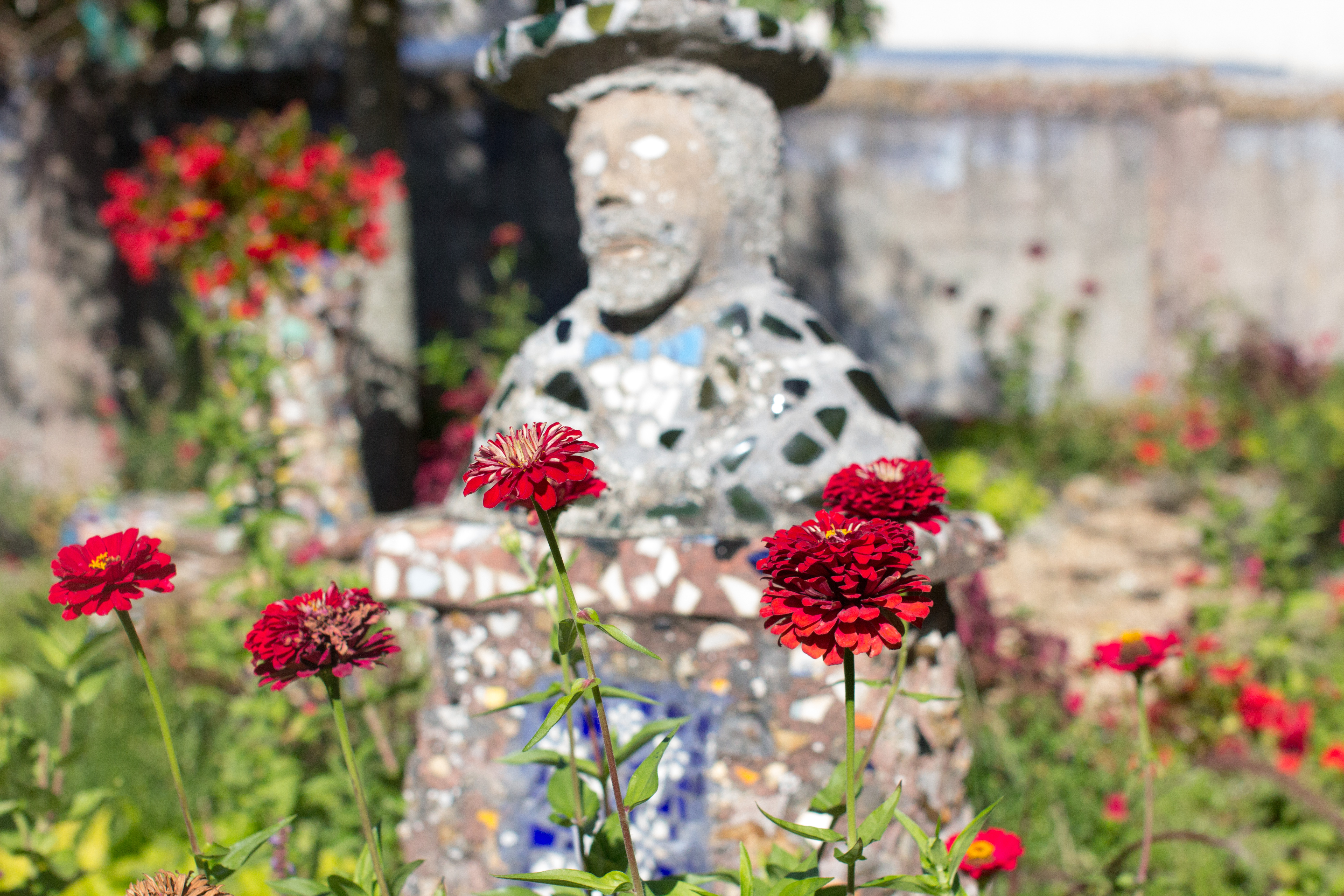

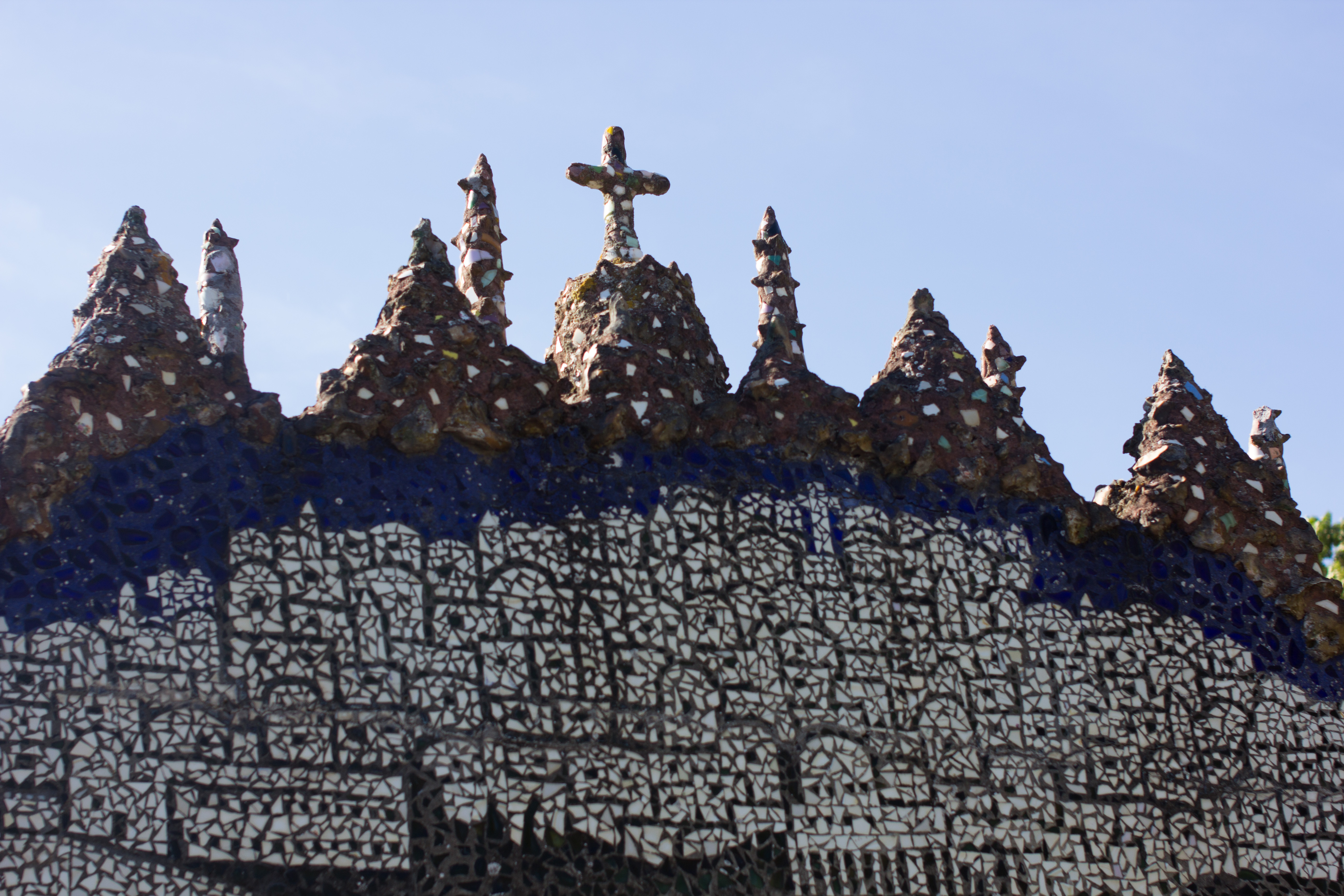
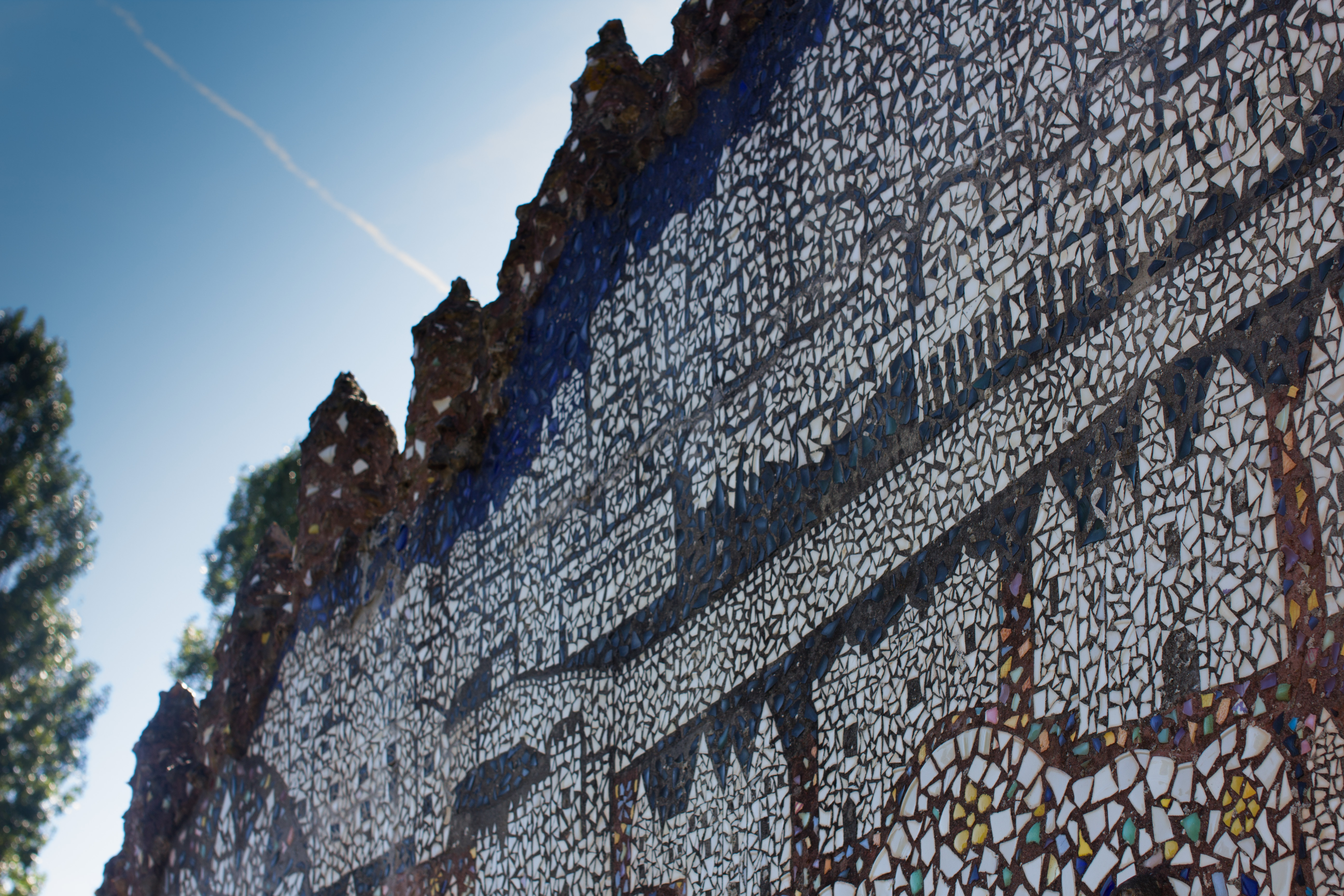
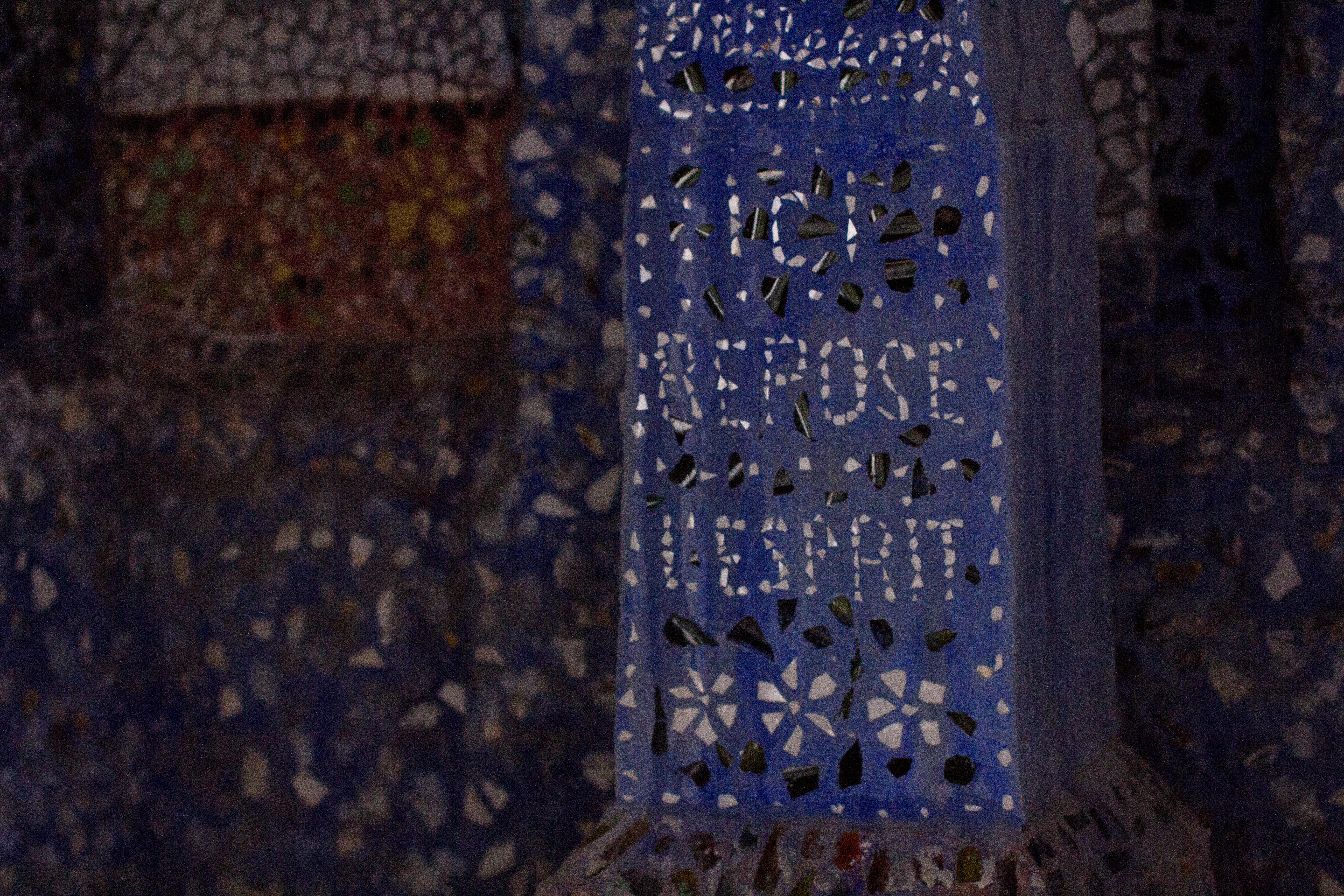


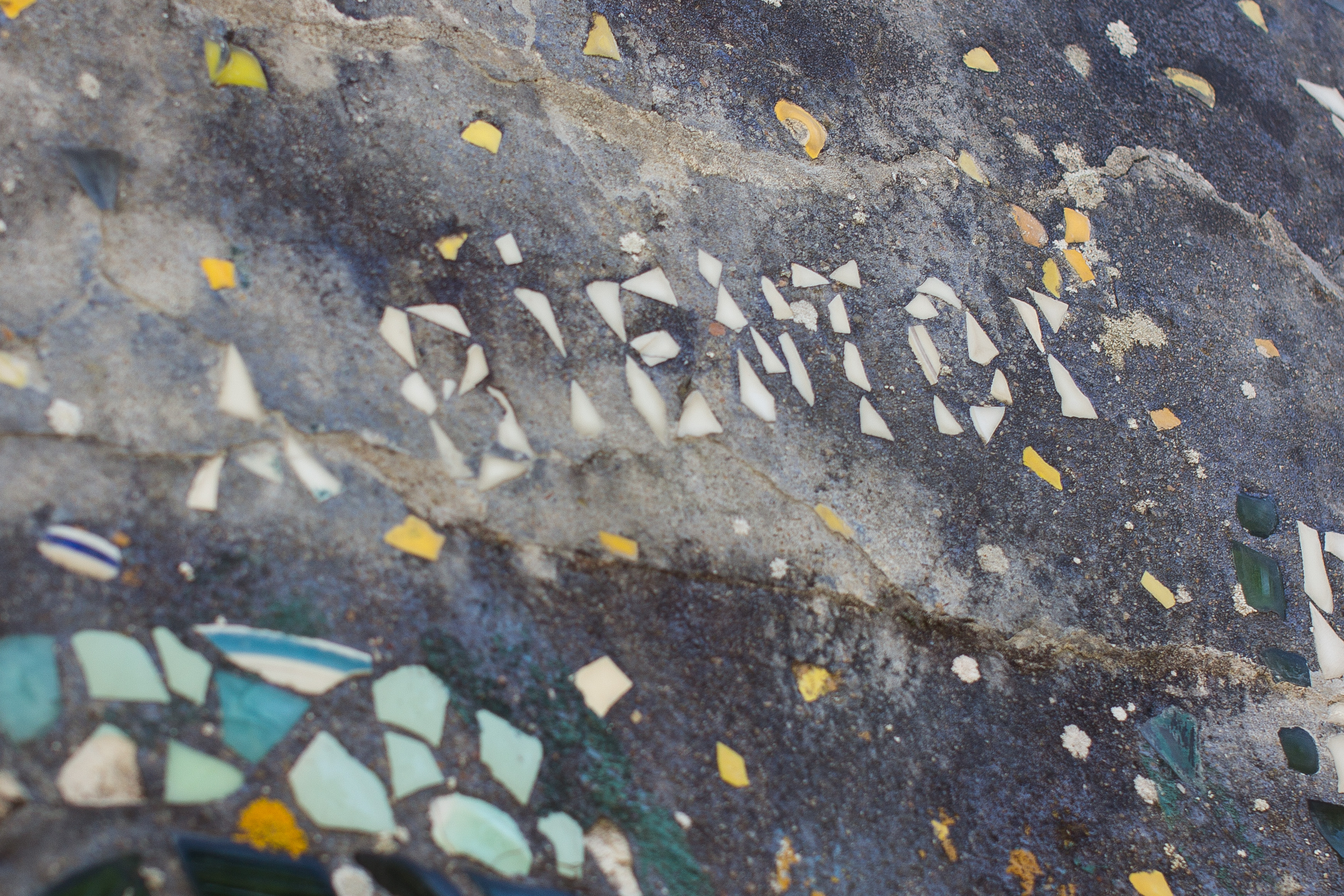
The beauty of creating these personal visual travel stories for Living In Clips is that we get to relive our experience, take a closer look at all the details we might have missed while documenting the experience, and also to read up more on the history. We hope you enjoy travelling with us.
You can find out more about the opening times and access to Chartres and Maison Picassiette here.
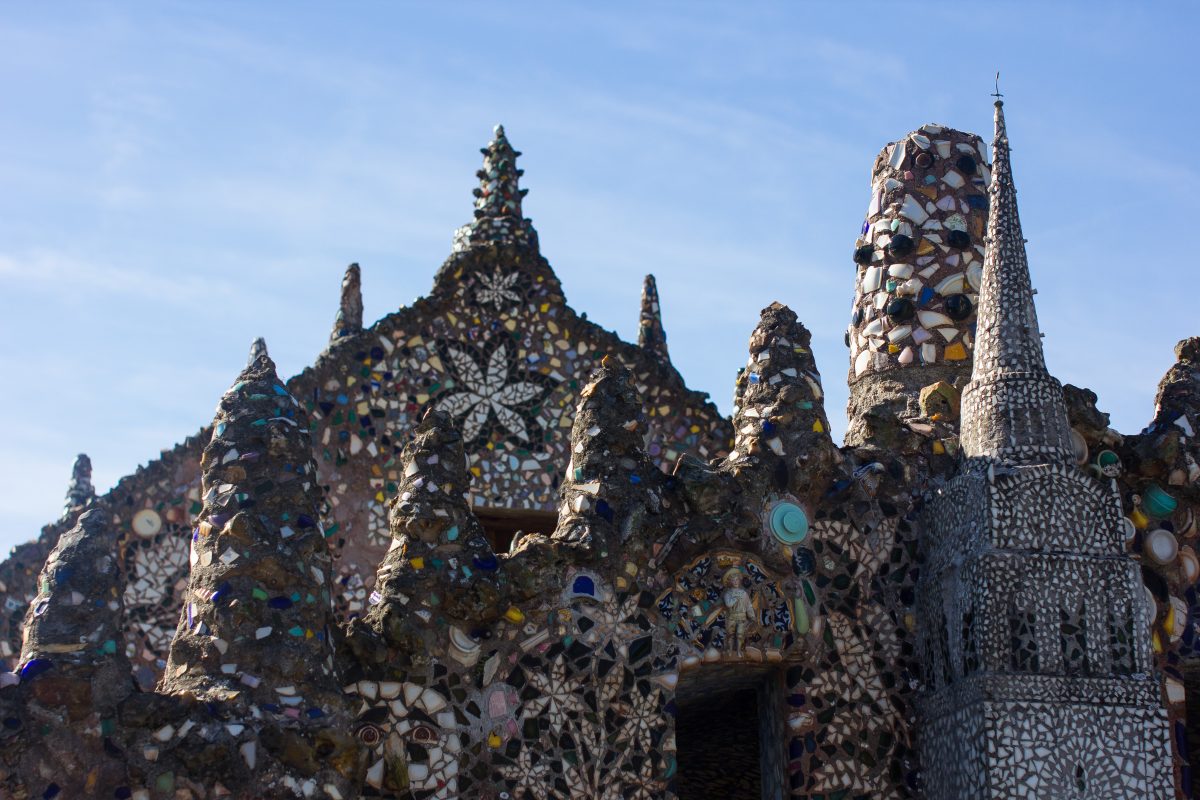
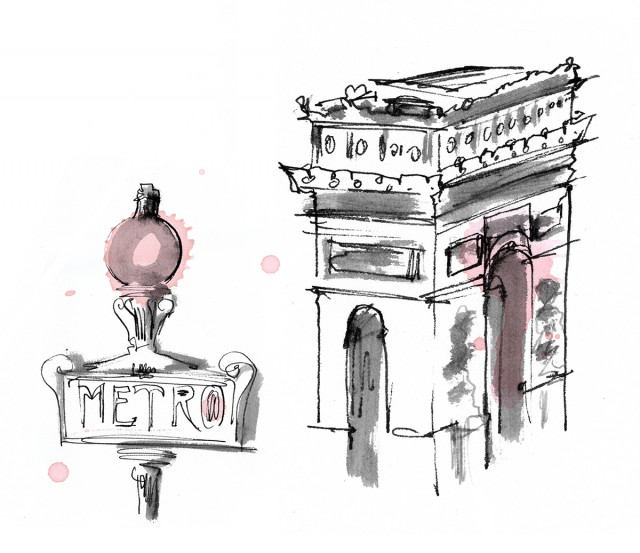
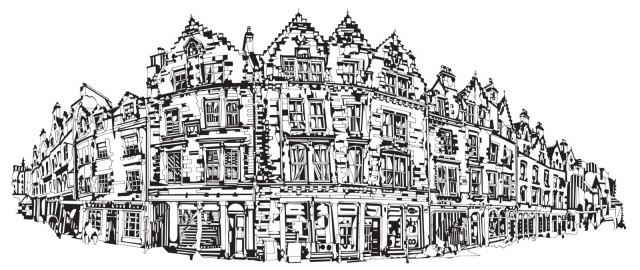


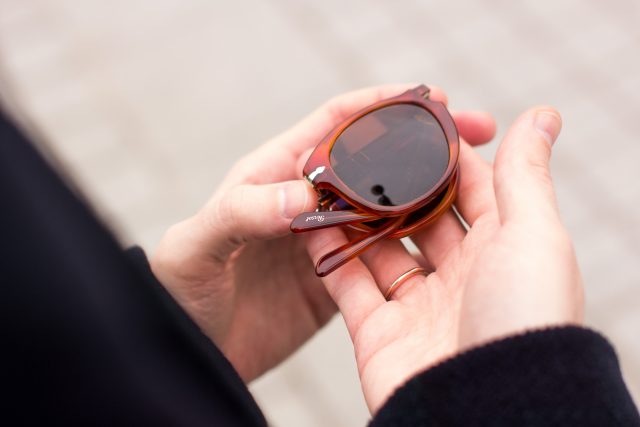
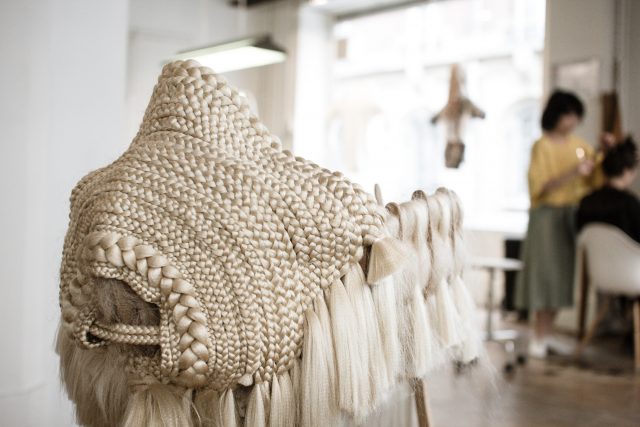
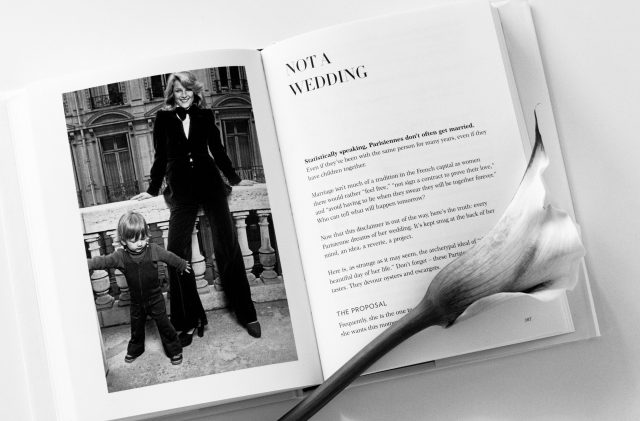
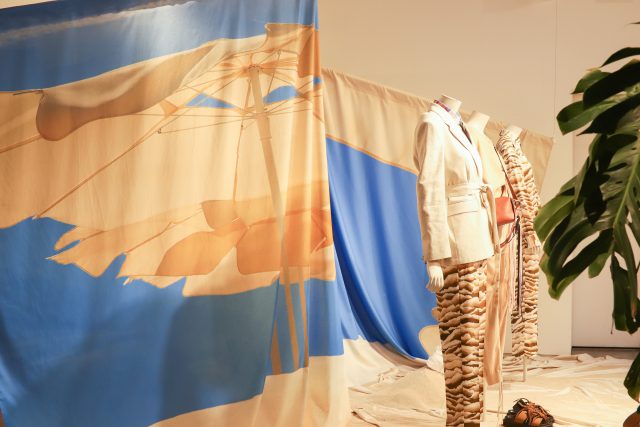

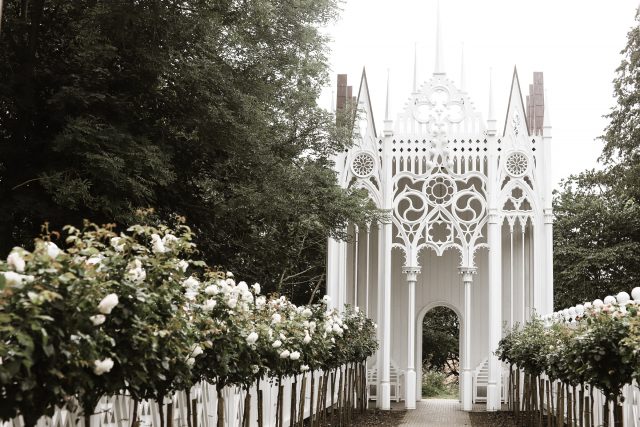
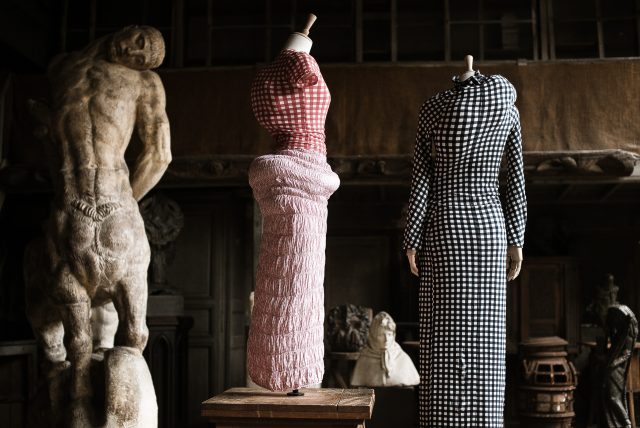
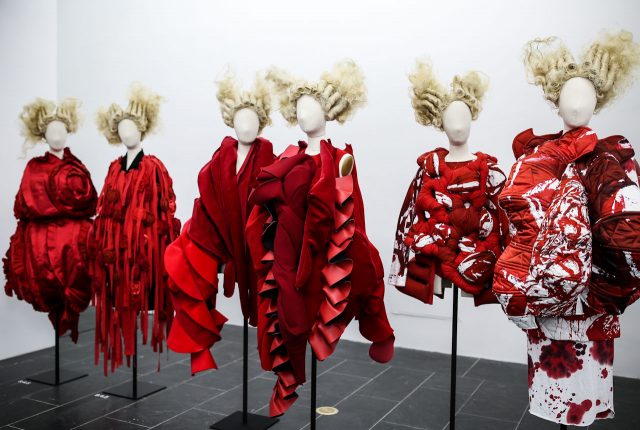
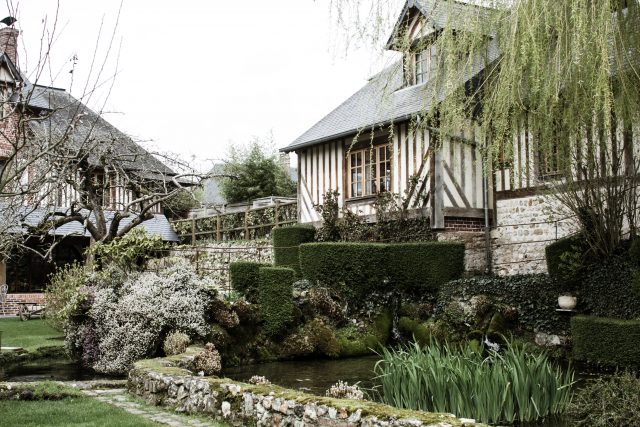

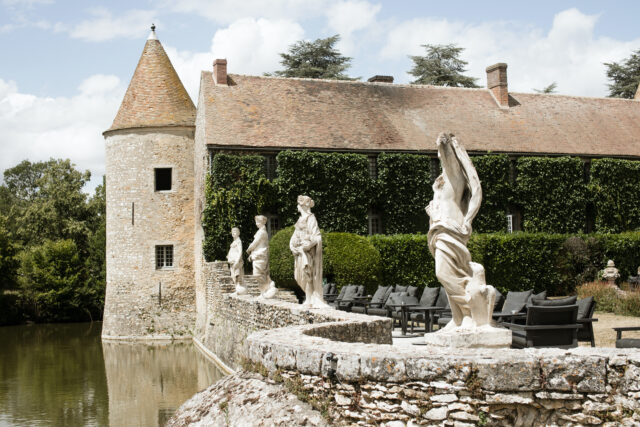


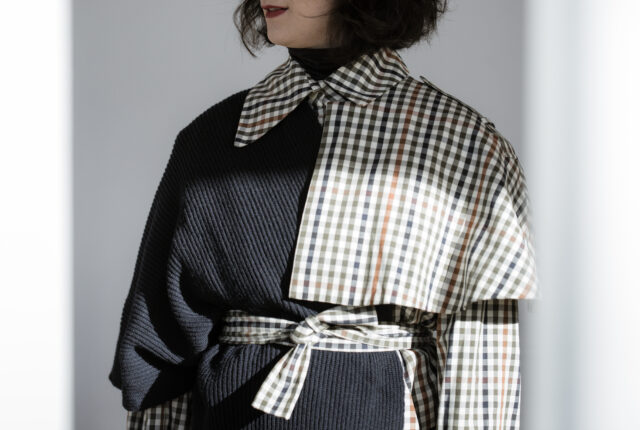

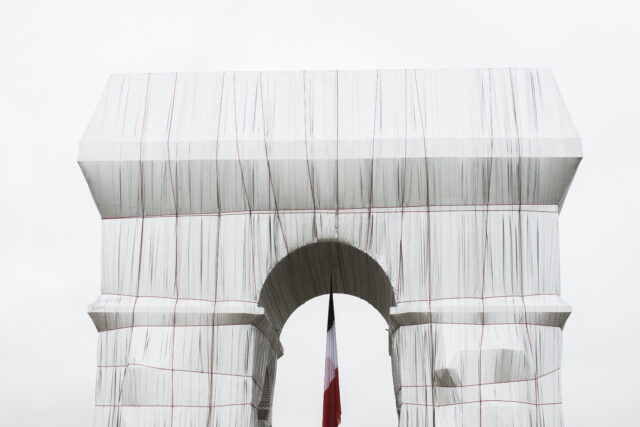
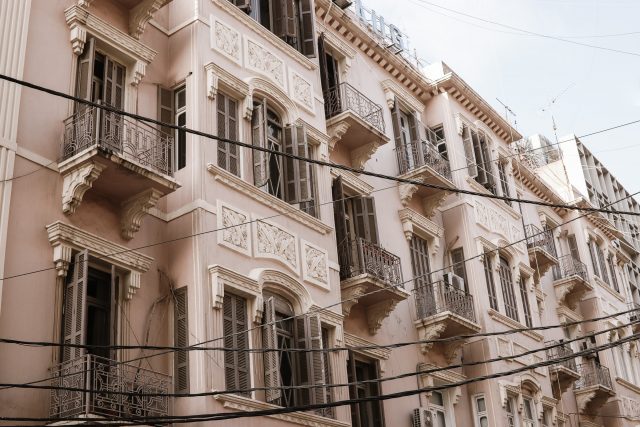





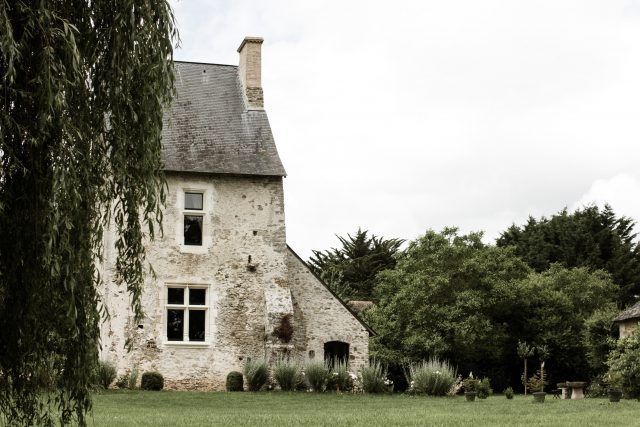
Absolutely beautiful pictures!
Thank you so much :) it was the most incredible place to visit !!